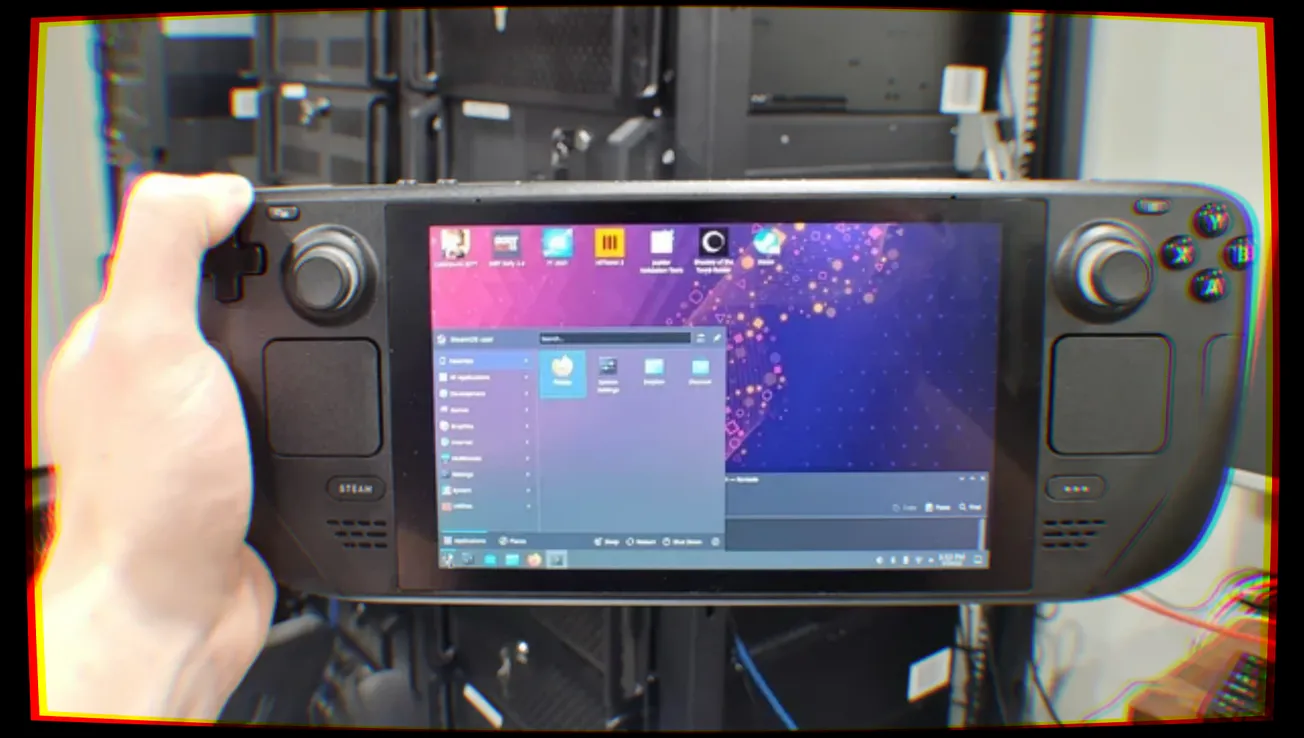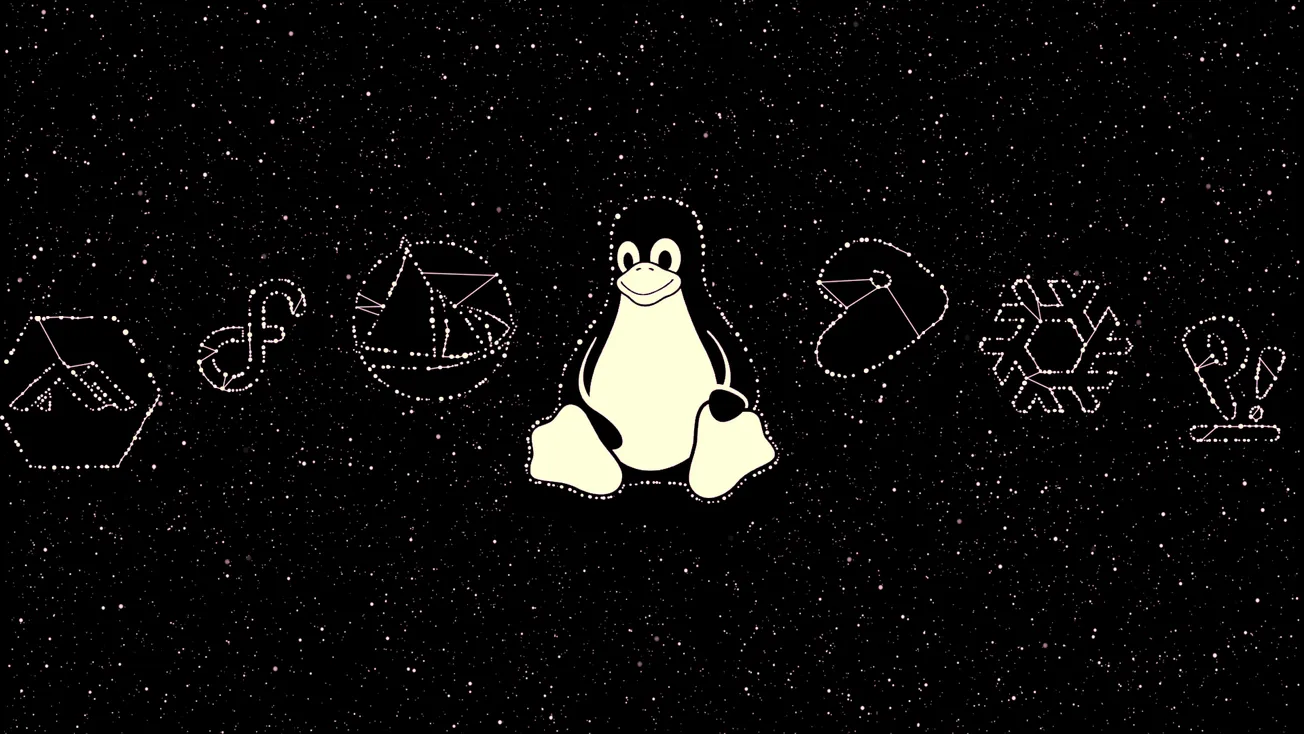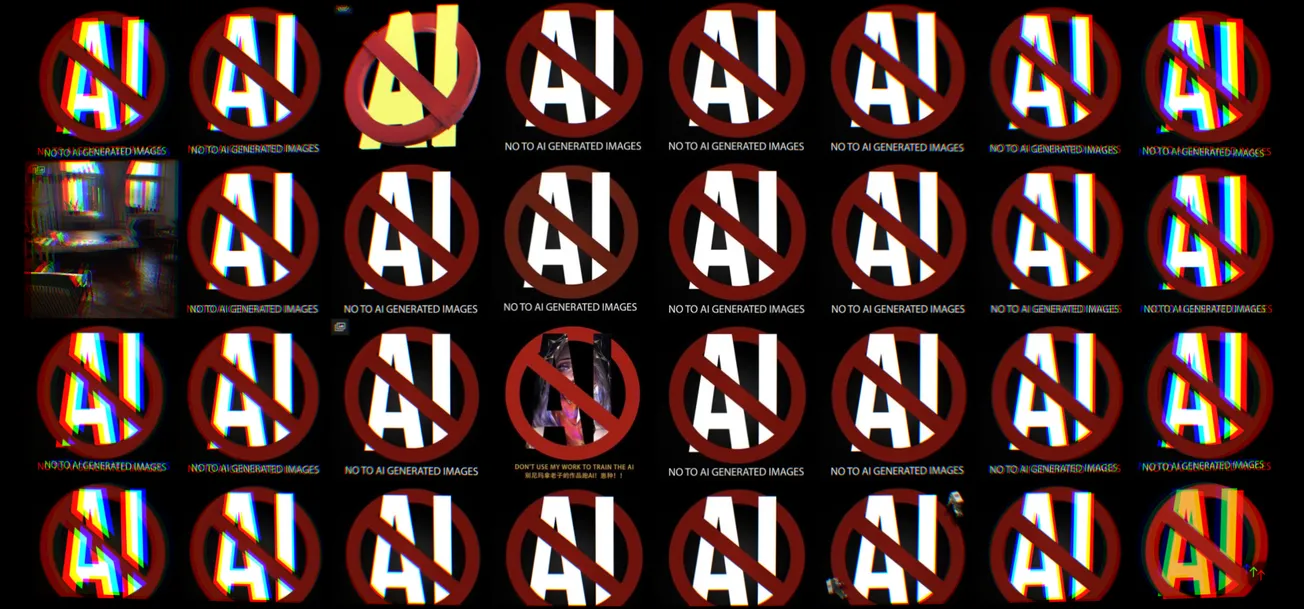Table of Contents
Valve, the company behind Steam and iconic franchises like Portal, Half-Life and Team Fortress, is undoubtedly one of the most important companies for the Linux desktop. They are known for the Steam Deck, a best-selling handheld game console based on Linux, and they have put in a tremendous amount of work to bring AAA gaming to Linux over the years. However, just like Rome was not built in a day, so wasn't this relationship.
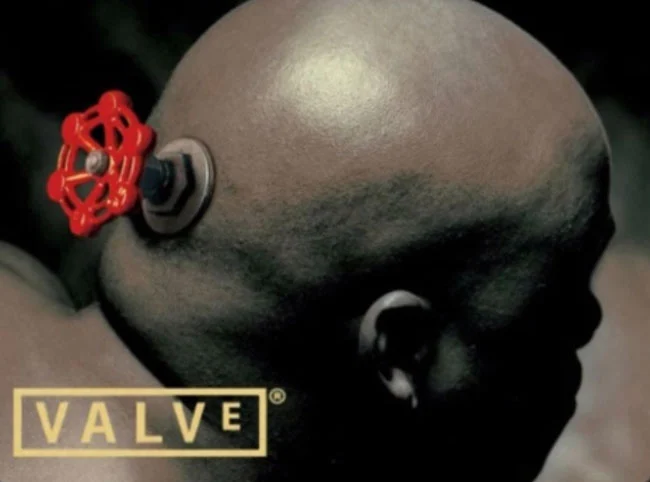
So, how did Valve become so acquainted with the Linux ecosystem?
90s and 2000s — Microsoft dominates PC gaming
Released in September 2003, Steam has been the leading online store for PC gaming for quite a long time. However, for the longest time, its main support target has been the Windows operating system. It is not hard to believe why: PC gaming has, historically, been closely tied to the Windows ecosystem.
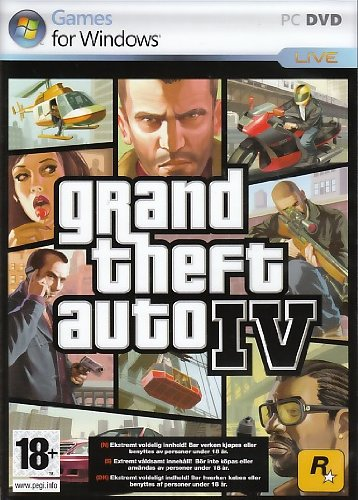
Apple's Mac platform has never been too interested in supporting gaming as a first-class citizen, focusing primarily on other audiences, but gaming on Microsoft computers was big since the olden days of MS-DOS, Windows's ancestor. It would not be inaccurate to claim that a huge part of PC gaming as a concept took birth on DOS.
Indeed, many of the most iconic PC games and franchises were born as DOS games. Just think about DOOM: it was released in 1993 for MS-DOS systems, and it has been a true icon ever since. Not only has it shaped the genre of first-person shooters, but it was also the game that gave birth to the speedrunning community, a community of gamers who take it as a personal challenge to beat a video game in the shortest possible amount of time.
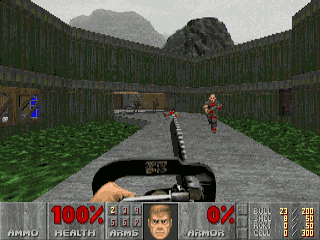
It was a commercial hit, and it quickly became so iconic and widespread that it is widely known even today. The internet is doing plenty to keep it alive: for example, it is now a standard that, if a platform that can possibly run code exists, then Doom must be ported onto it. Doom has been ported to embedded devices like industrial machines and medical devices; it has been made to run in Word and PDF documents, and it was even made to run in other video games through mods! Because yes, you absolutely need to have a Doom cabinet in the Stardrop Saloon in Stardew Valley to play after draining whatever was left of your soul with yet another unsuccessful run at Junimo Kart.

However, writing games for DOS was painful. Having to write handwritten Assembly code to get anything resembling smooth gameplay was an absolute necessity, and having to deal with high-resolution displays (for the time) or outputting any kind of sound would make developers want to tear their hair out all the time. As hardware capabilities eventually grew from what most DOS machines were capable of, the new standard became Windows 3.1. However, game developers were not happy: the new operating system didn't run in Real Mode anymore, as it had made the switch to the more modern Protected Mode. This meant DOS game developers were no longer able to abuse BIOS runtimes and direct hardware access for the incredibly hacky implementations DOS games required. Windows 3.1's libraries did not work quite well with game development, leaving game developers in the dark. Microsoft decided it was time to do something after employee Alex St. John had been in contact with various MS-DOS game developers, reporting how, due to these reasons, they were mostly uninterested in porting their DOS games to Windows.
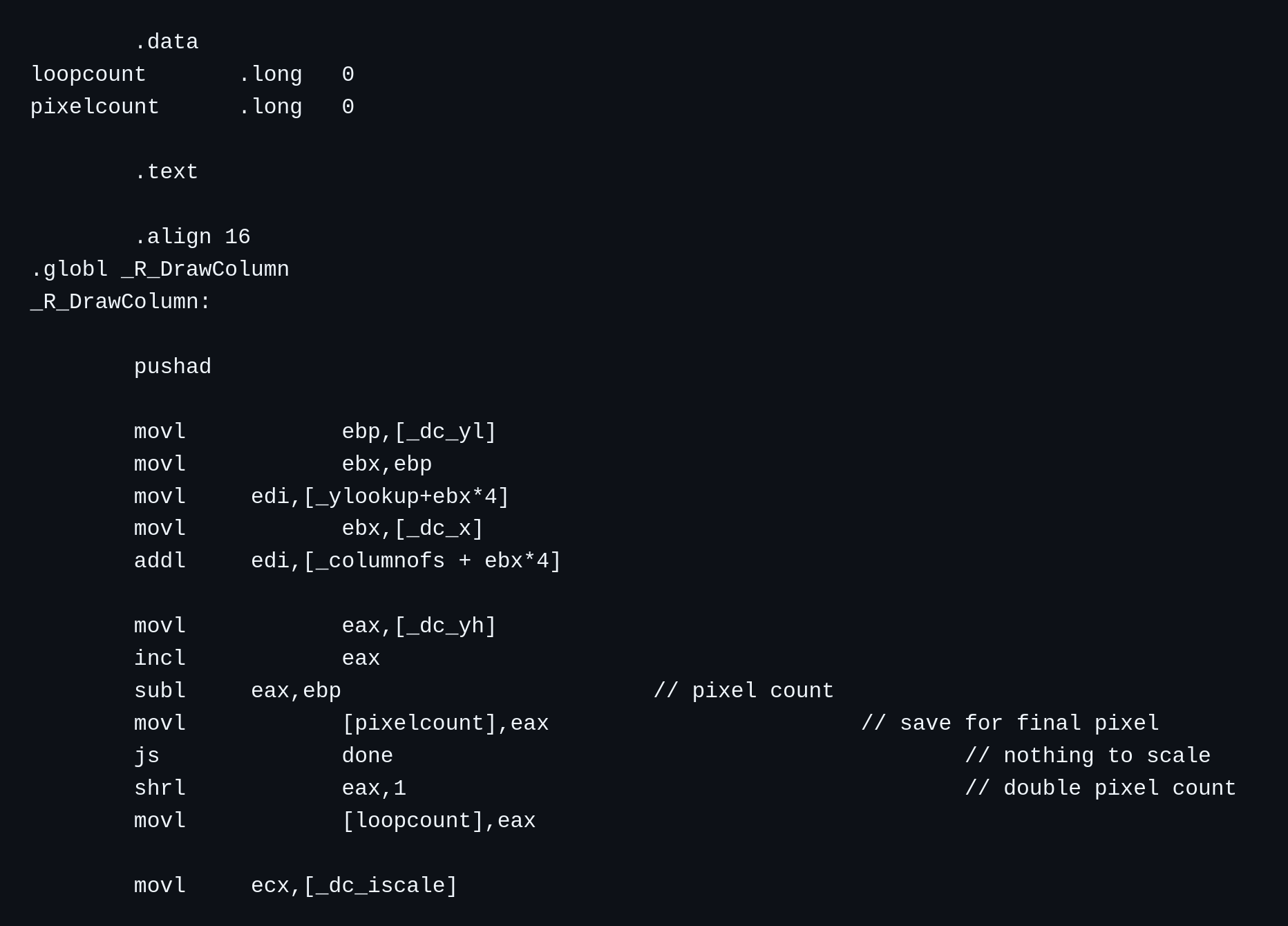
tmap.s — the logic behind texture mapping in DOOM. It was written directly in Assembly for optimization reasons.So, the Manhattan Project started. Manhattan Project was Microsoft's attempt at creating a set of APIs that would make the task of writing games for their platform significantly less painful. The questionable naming decision was, sadly, fully intentional: while Microsoft had most of the PC gaming on its side, the gaming industry as a whole was mostly dominated by game consoles from Japan. Microsoft wanted to directly attack that market with Windows, finally providing a platform that would make it easier to write games for PCs. These efforts materialized in 1995 with the release of DirectX, a set of APIs that abstracted various aspects of what was needed to write games — from presentation to GPU acceleration to audio, to handling inputs, and more — at the Game Developers Conference. In 1996, DirectX became a built-in component of the second service pack of Windows 95 and the business-focused Windows NT 4.0.
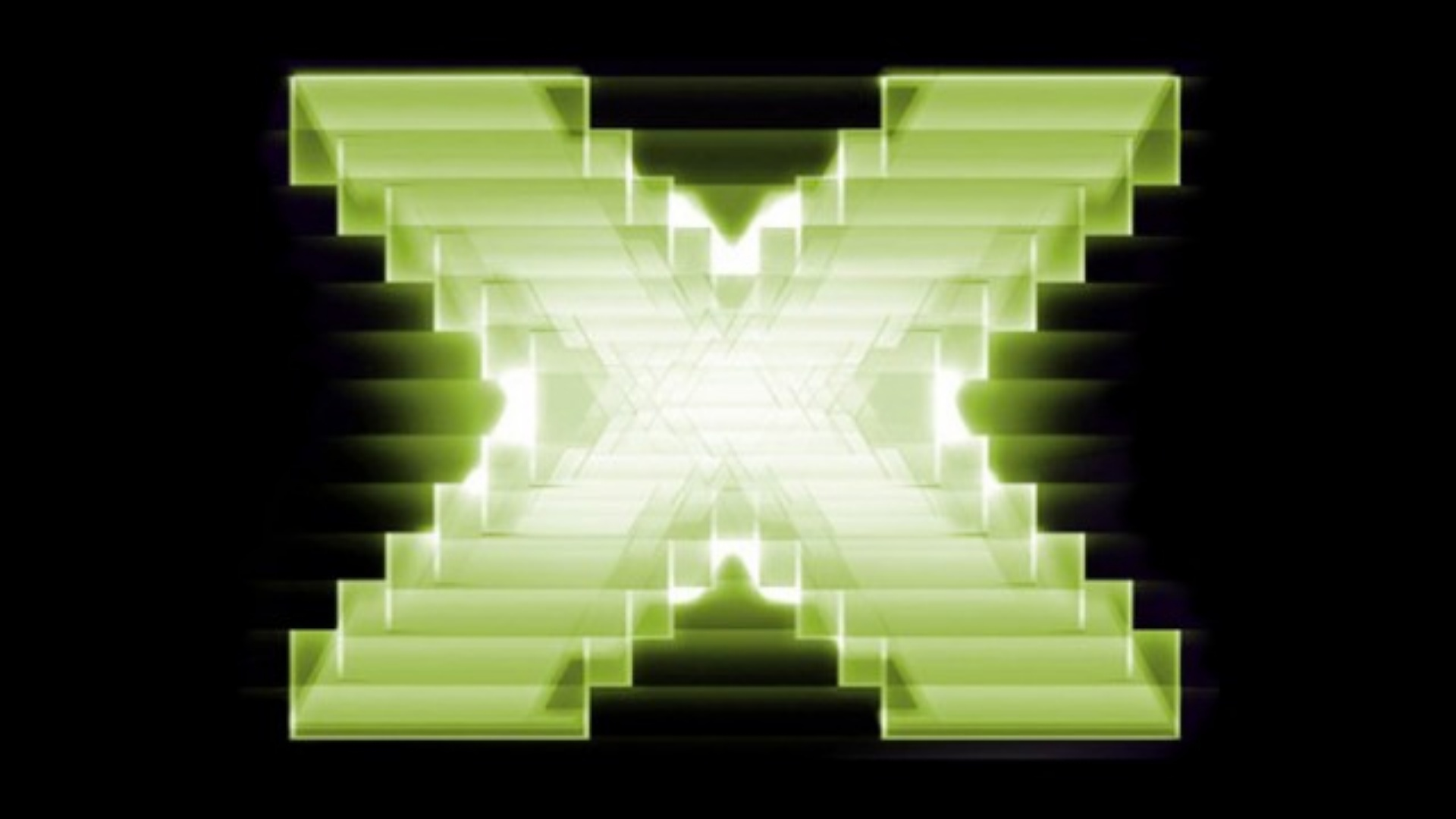
Despite the questionable taste in the choice of naming and logo, Microsoft's idea was correct: DirectX was well-received by game developers, and it kickstarted a very healthy ecosystem of great games for Windows, that did, indeed, rival the quality of the games you could find on dedicated game consoles at the time. The use of DirectX libraries was also further commodified with the integration with the .NET Framework, the closed-source predecessor of the now FOSS .NET runtime — which allowed developers to access DirectX APIs from C#, an object-oriented programming language that is very similar to Java and that is easier to use than C and C++. C# has been used as the base for a lot of successful PC games, including the more recent success Stardew Valley, playing a vital role in lowering the barrier of access to writing PC games.
2003 — Steam revolutionizes how PC games are distributed
In September 2003, Valve launched the Steam platform, after teasing it back in the 2002 Game Developer Conference. Initially, Steam was meant to be a software frontend to help users keep Valve games up to date, but it eventually evolved into the PC games store that it is today in 2005.
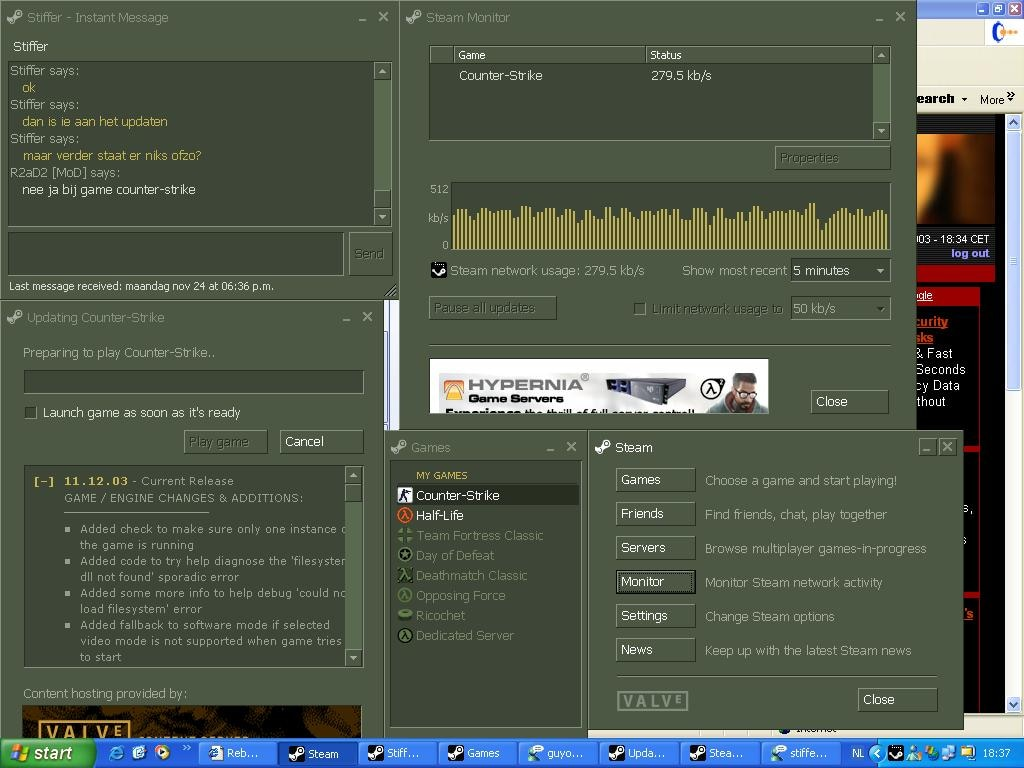
Steam was simply revolutionary: it offered a solid set of quality-of-life features and APIs to game developers and, overall, it made it very convenient to buy and sell computer games from a standardized place. Steam was pretty well-received, gaining endorsement from both major GPU vendors at the time — ATI and NVIDIA — that promoted it with special bundle offers: for example, in 2007, Steam was included in the ATI GPU driver, and free copies of Half-Life 2: Lost Coast and Half-Life 2: Deathmatch were given to owners of their GPUs. NVIDIA did the same in 2008, offering a copy of Portal: The First Slice to owners of their GPU hardware.
The success of Steam was unprecedented, and it showed how important offering a good user experience is for the sale of anything. Steam made legally acquiring games so easy, that overall sales of video games went up, as fewer people felt the need to resort to piracy. The President and Co-Founder of Valve had something to say about this phenomenon:
“We think there is a fundamental misconception about piracy. Piracy is almost always a service problem and not a pricing problem. If a pirate offers a product anywhere in the world, 24 x 7, purchasable from the convenience of your personal computer, and the legal provider says the product is region-locked, will come to your country 3 months after the US release, and can only be purchased at a brick and mortar store, then the pirate’s service is more valuable.”
― Gabe Newell
Of course, Windows has been Steam's main and only target for a very long time, mostly because most computer games only run on Windows. A Mac version of Steam eventually launched in 2010, allowing Apple Mac users to access the Steam storefront as well but, truth be told, it never quite caught on: only a subset of games were available for the Mac, and Apple didn't particularly help its case. Mac hardware was, on average, quite underpowered on the graphical side compared to equivalently priced Windows machines, and Apple just did not seem to care about the gaming experience on Mac. Even today, macOS ships outdated versions of the main graphical APIs — OpenGL and DirectX — primarily supporting their own Metal API, which is not really being adopted by the gaming industry. Still, it was something: even today, Steam is the best way to game on Mac machines, as it runs… whatever games still work after Apple dropped support for 32-bit libraries completely.
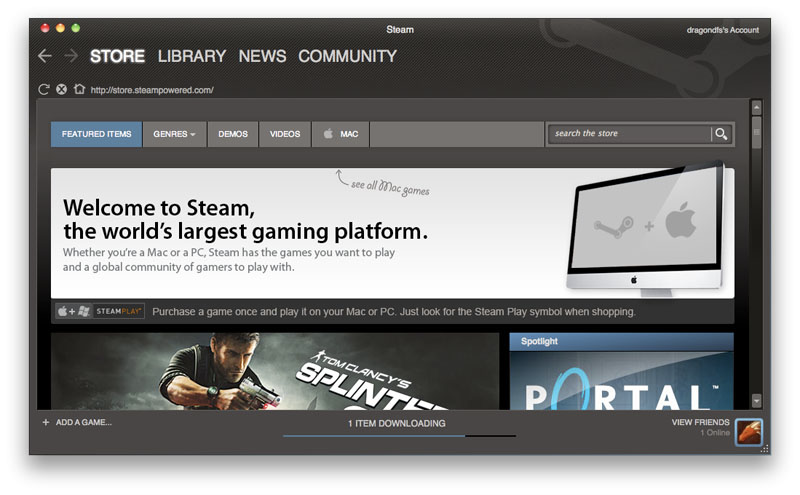
There was something revolutionary about this launch, though. Rather than forcing users to buy separate licenses for Windows and macOS copies of the game, Valve introduced the concept of Steam Play: games that had the “Steam Play” logo supported both Windows and Mac platforms, and the same license was valid across operating systems. This meant that, for example, a Mac user should not be afraid of buying a game for their Mac computer, because the license would have carried over, should they have decided to also purchase a Windows machine for more serious gaming.
Up to this point, things were nice and stable. Valve mostly targeted Windows users, and Windows was a solid platform for their store. Business was good, and the platform was growing.
Until…
2012 — Windows 8 launches, Valve fears for their future and invests in Linux
In 2012, Microsoft launched its most controversial operating system, even to this date: Windows 8. Windows 8 was far from being just an iterative, quality-of-life upgrade over Windows 7, it conceptually reimagined how people would use computers, in a way that was quite disruptive.
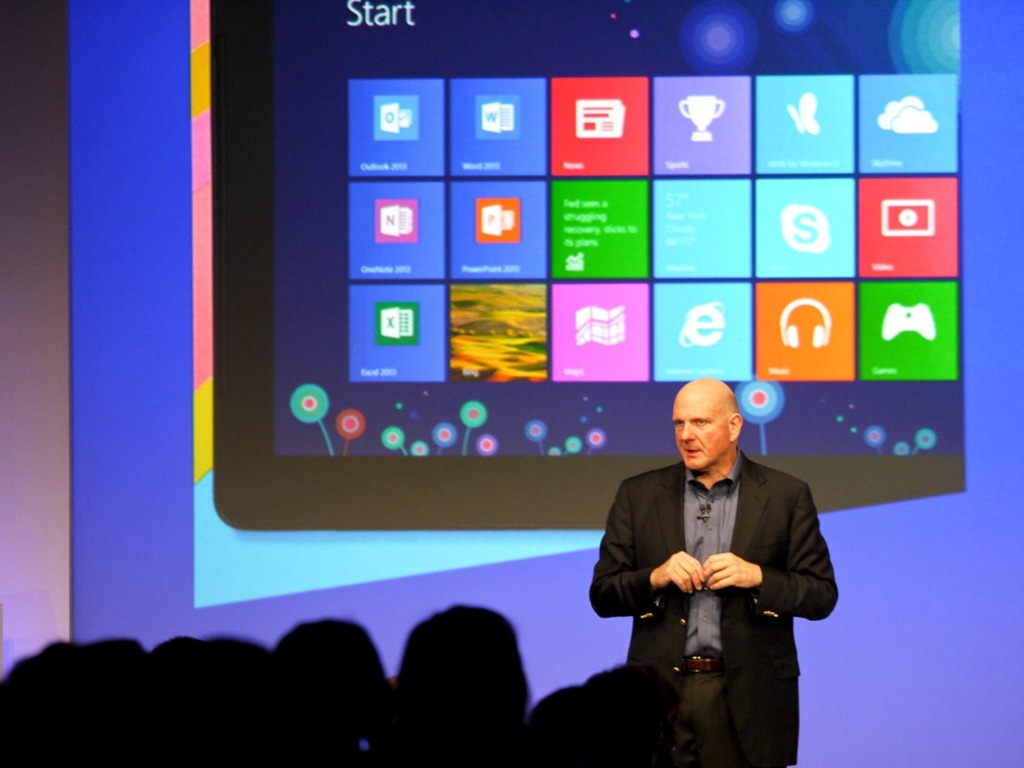
There are a few controversial things about this launch. Starting off, the UI was starkly different from that of Windows 7: it seemed like it was meant more for tablet computers than anything. On the same note, Windows 8 introduced a new type of applications — Universal Windows Platform (UWP) apps — that were meant to slowly replace “legacy” Win32 applications. UWP apps would run in a confined mode very similar to that of desktop apps, and they would be available over a diverse set of devices: full computers based on x86, ARM tablets based on Windows RT, and mobile phones running Windows Phone 8. The part that worried several people was Windows RT, a build of Windows 8 that was meant to run on ARM devices like the Surface RT. What was striking about it was that it was really locked down: users could no longer run standard Win32 applications as .exe files, but they were limited to UWP applications downloaded from the Microsoft Store. This meant that Microsoft was the one and only source of truth, and unapproved applications would not run on it!

On top of Windows RT and the Windows Store, an “App Store” for Windows applications, Microsoft had also launched the Xbox app on Windows 8, preparing the first steps of what has become, today, the full integration between the Windows and the Xbox ecosystems.
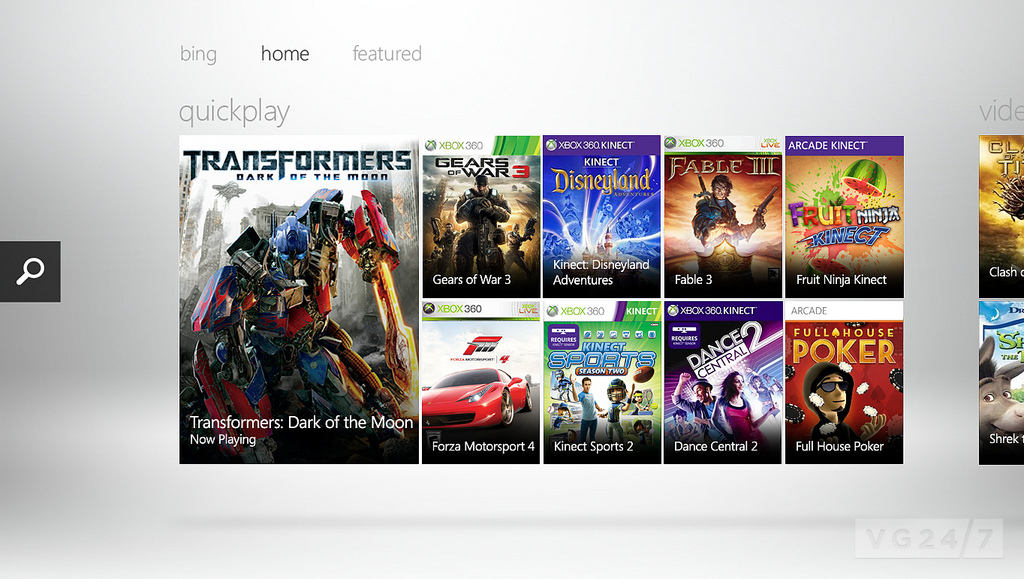
Clearly, Valve was not happy. With this move, Microsoft had all but disturbed the equilibrium that made Steam and Windows coexist happily, as it was not only working on a direct competitor to Steam that was built directly in the operating system — creating a situation where Microsoft could easily use anti-competitive tactics from a position of advantage down the line — but they were also playing around with the idea of completely locking down Windows, using the Surface RT as a test-bed, potentially leaving Steam either unable to distribute to Windows anymore or being forced to operate under restrictions.
This is the situation that made Valve begin to work on a way out, a backup plan to ensure they would remain in business, should Microsoft eventually decide to go forth with the vision they were toying around with, and lock Windows down completely. The first instance of this interest comes from something Gabe Newell said at a sponsored dinner with other industry members:
“We want to make it as easy as possible for the 2,500 games on Steam to run on Linux as well. It’s a hedging strategy. I think Windows 8 is a catastrophe for everyone in the PC space. I think we’ll lose some of the top-tier PC/OEMs, who will exit the market. I think margins will be destroyed for a bunch of people. If that’s true, then it will be good to have alternatives to hedge against that eventuality.”
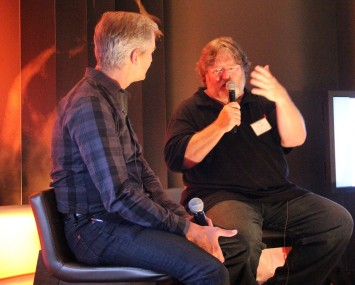
Reading these words today is... surely something. While Microsoft did not end up closing Windows down eventually — especially after sunsetting Windows S, yet another failed attempt at the same thing Windows RT was trying to do — Newell's vision was spot-on, and he proceeded to do exactly what he had promised.
In retrospect, though, this is not surprising. Before co-founding Valve, Gabe Newell had spent 13 years working at Microsoft on the Windows operating system, being effectively one of the people who helped develop the Windows gaming ecosystem. If a person with that particular background was worried about the steps Microsoft was taking, their intuition was probably good.
The initial version of the Steam client for Linux was launched in a public beta test in late 2012, to be released to the public in February 2013. Much like the macOS version, the client did not support running Windows games — before quite recently people would attempt that, with very low degrees of success, by trying to run the Windows version of Steam on Wine — but, rather, it allowed Linux users to play Linux builds of the games that supported them, without having to buy the license again thanks to Steam Play. The first game to launch on Steam for Linux was Valve's own Left For Dead 2, and the experience was acceptable: it ran at a reasonable frame rate, and its multiplayer mode was compatible across clients. This meant that people could play Left 4 Dead 2 together across all three operating systems easily.
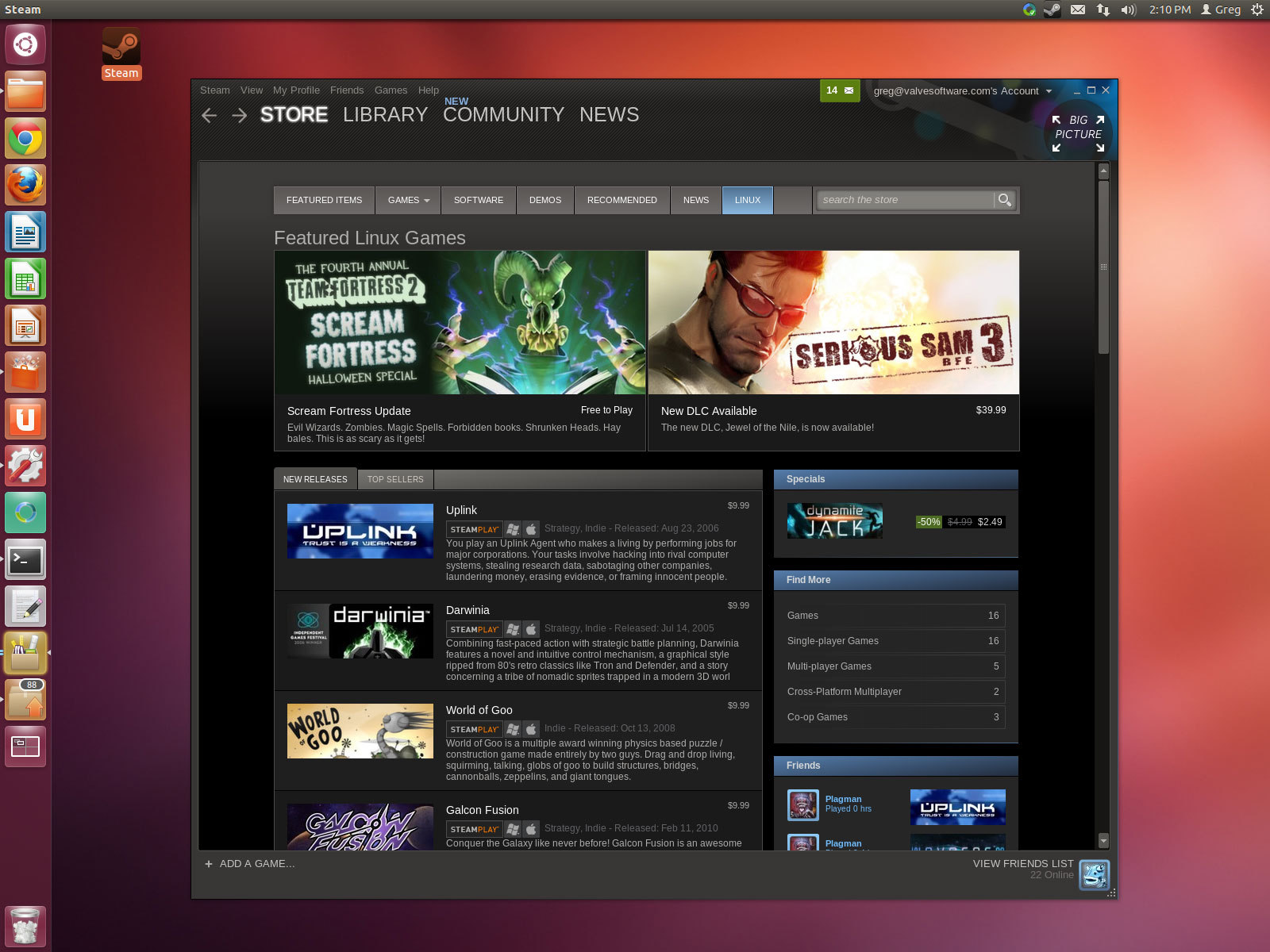
At roughly the same time, Valve introduced a new feature in the Steam client: the Big Picture Mode. This alternative view was designed to be used entirely through a controller, providing an interface that could be comfortable to use from the sofa, similar to that of game consoles like the PlayStation and Xbox.
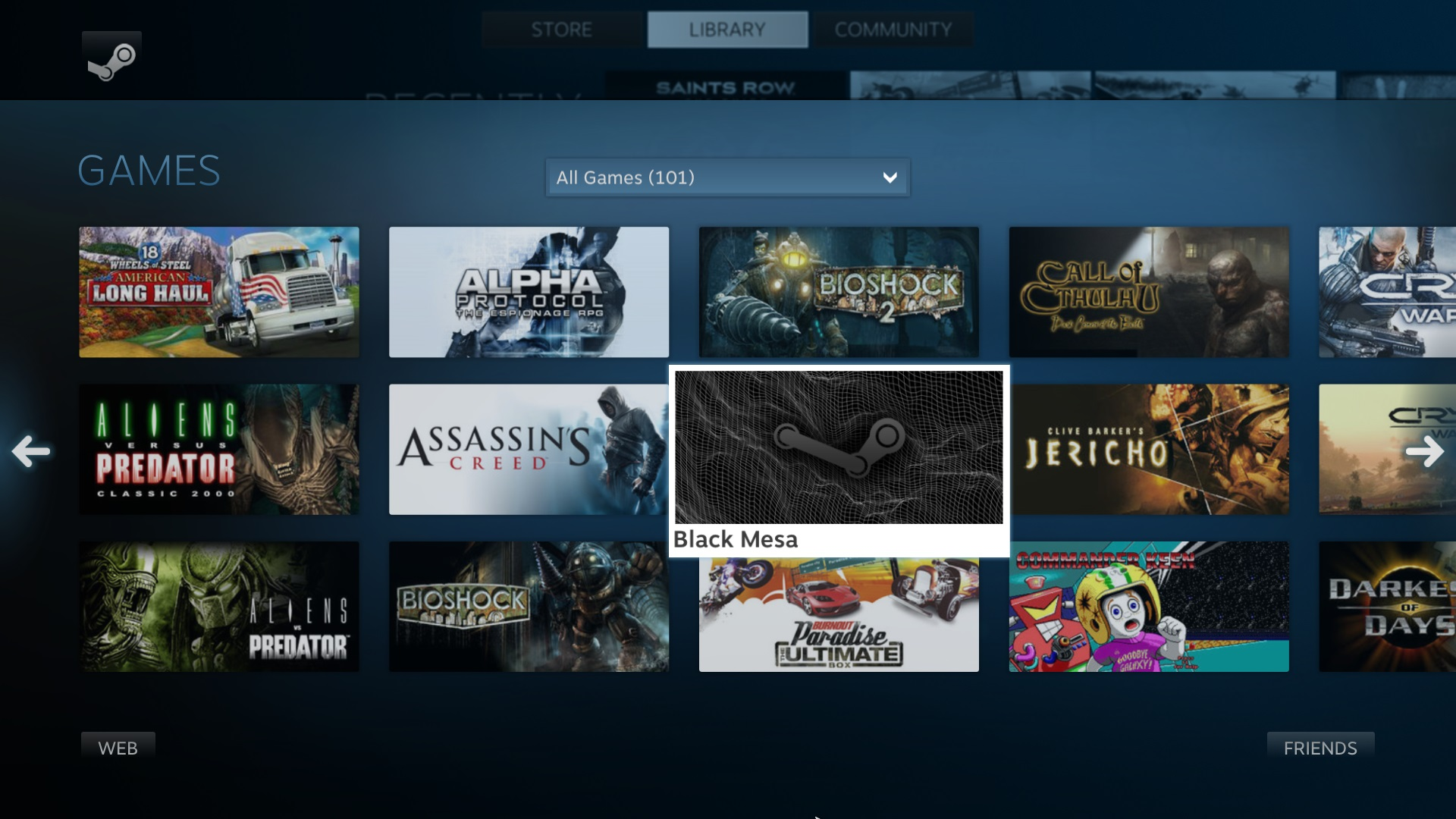
The reason behind this new feature was revealed at the same time by Valve themselves when they announced they were working on a new console, that people began tentatively called the "Steam Box".
2013 — The Rise of the Steam Machine, Valve's first Linux console
Newell was very excited about this new piece of hardware. He stated that the new Steam console, called the Steam Machine, was in the works. The idea was to release a reference model themselves and work with existing hardware manufacturers to release third-party models with different specifications and focuses. The console was set to run a Debian-based Linux distro called SteamOS with the Big Picture Mode enabled by default, to make it comfortable to operate as a living room TV. To go with it, the console would have had its complementary official controllers released alongside it. Valve had big plans and big expectations for the console: not only did they want to merely release a Linux box, but they wanted to use it as a test bed for new and exciting technologies, like kinetic input, or the ability to wirelessly screencast gameplay to any monitor or TV in the house.

The Steam console was already set to be special. Unlike all existing consoles thus far, the direction Valve was taking is that of openness, the same culture as Steam itself, which has remained an open ecosystem since it initially opened sales for third-party games. Not only were third-party hardware manufacturers actively encouraged to release hardware competitors to Valve's reference implementation and rest assured they would receive full endorsement and support, but they also clearly stated there would be no exclusive titles for SteamOS, actively discouraging third-party developers from releasing any:
“Whenever we talk to third-party partners, we encourage them to put their games in as many places as possible, including not on our platforms," (...) "Because we think that customers are everywhere, and they want to put their games wherever customers are. That would go against our whole philosophy, to launch something that’s exclusive to SteamOS or Steam machines."
- Anna Sweet, Valve
Valve finally released the Steam console and its companion Steam Controller during the last week of 2013, with a release planned for mid 2014, while still shipping out some beta test units in the coming months. They had also released an early image of the SteamOS ISO to the public, mostly to appease Linux aficionados who wanted to beta test.
It was thanks to the testing of those Linux enthusiasts that more bugs were uncovered, forcing Valve to push the release of the Steam machines to November 2015.
It is interesting to take a look at the Piston Xi3, an experimental modular mini-PC that was set to be a prototype for the Steam Box. While the project was unsuccessful, there is now more information out on it, thanks to a Dingus Studios video where he played with this little thing 10 years later. The device was very interesting in its own right, and it even had a peculiar HDMI + DisplayPort combo port that would accept both output standards, which worked very well. It is unclear to me why this particular concept hasn't survived and it is not the current industry standard, it feels like such a missed opportunity. How has nobody even attempted a Framework expansion card that brings this concept back?
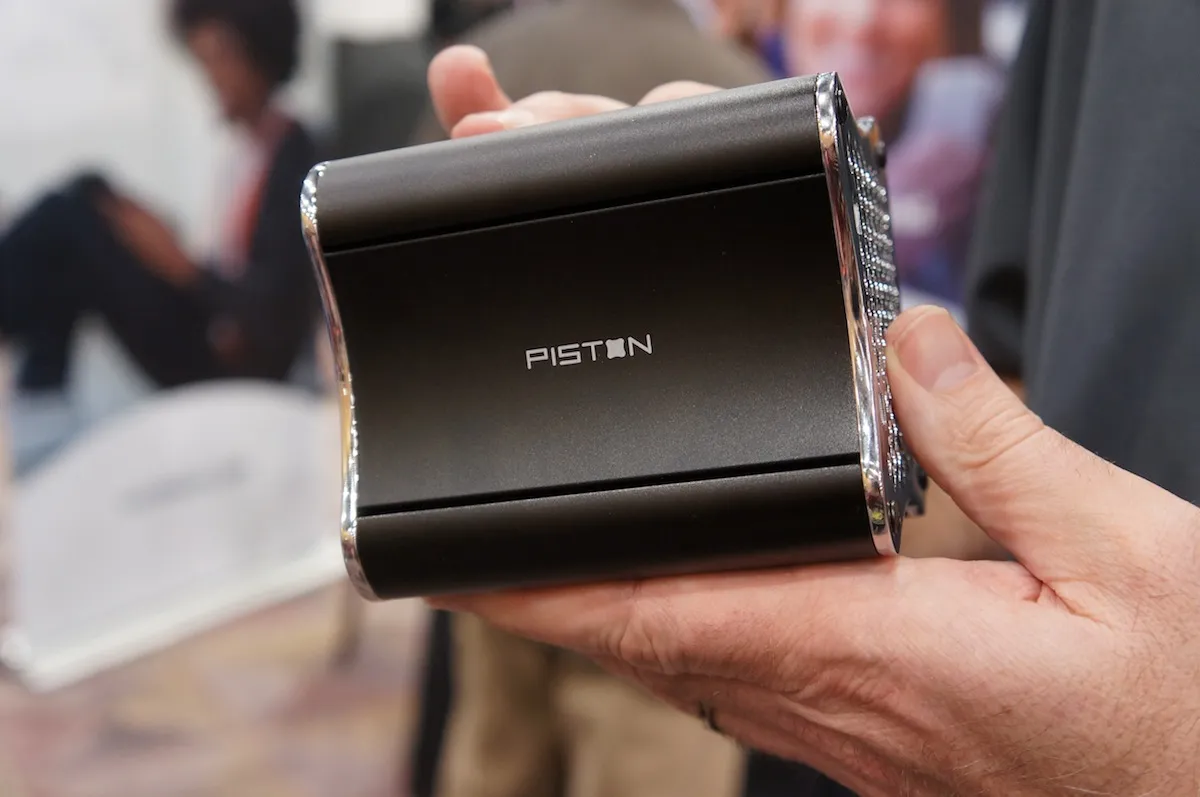
2015 — the Steam Machine releases
Anyway, let's get back to our story. In November of 2025, the first set of Steam devices — Steam machines, controllers and Links — were released to the general public. The Steam Machine was a SteamOS-powered mini-PC, manufactured by gaming PC manufacturer Alienware, and the Steam Controller was an original gamepad to go with it. Frankly, it was a great gamepad. Whoever has managed to snag one before it got discontinued is a lucky person: I am still impatiently waiting for a second iteration of this marvel.
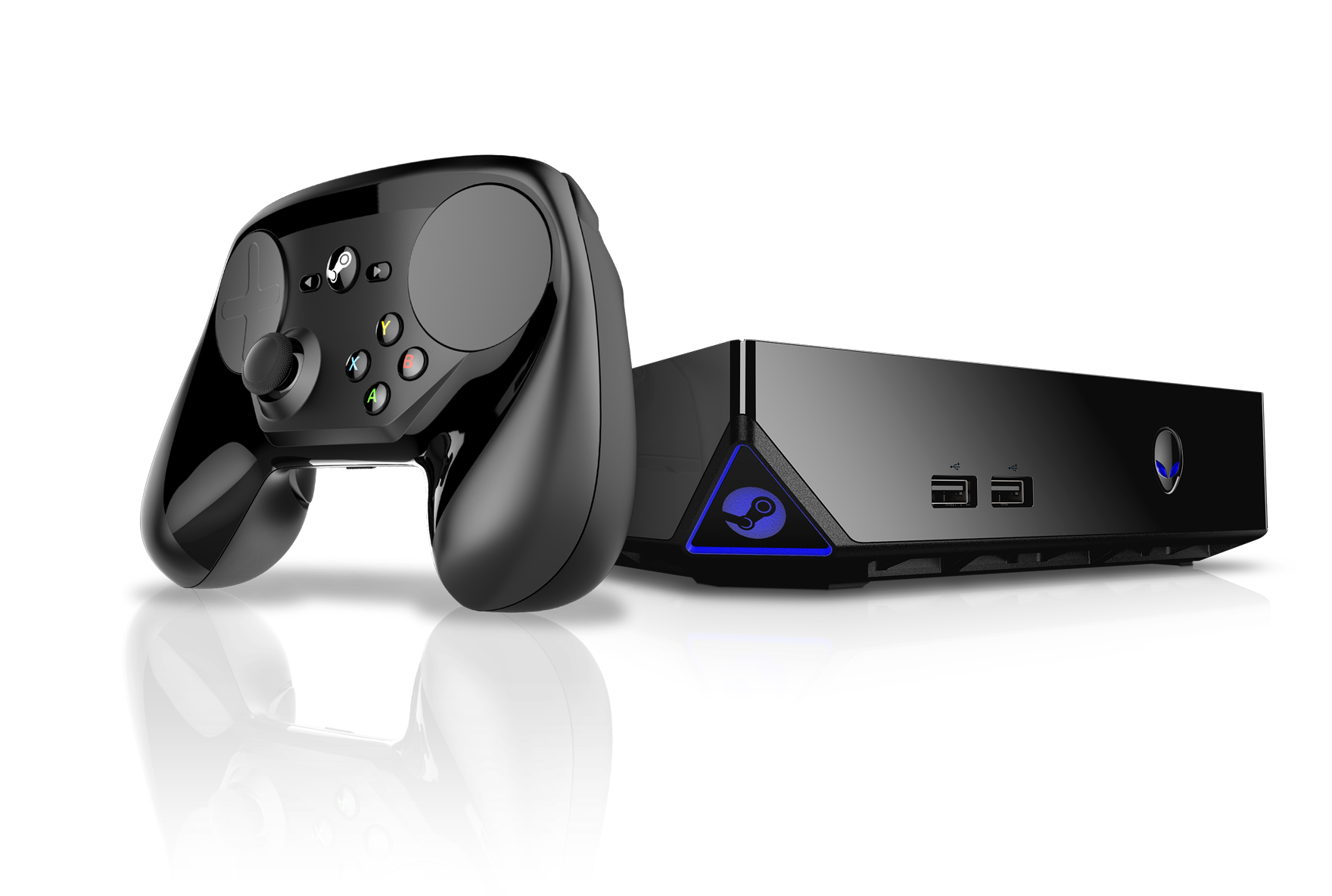
The third device that was released in that event was the Steam Link, a tiny little box that could connect to any monitor or TV. The Steam Link was used to stream games from a computer or a Steam Machine and play them in a different room, with no issue.
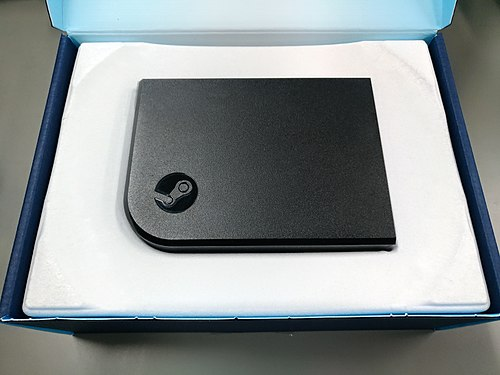
Sadly, Valve's first attempt at a console soon turned out not to be as smooth as expected. Shortly after its launch, Linus Sebastian made a video outlining all the usability issues that were there with the first iteration, and they were not trivial.

Time wasn't prime yet for something like this. The Steam Machine had several drawbacks: not a lot of games were compatible, but the checkout process allowed users to buy incompatible games from the machine itself without warning. Controller support was iffy by default, often requiring users to manually download community presets to get several games working on the sofa. And, lastly, the technology wasn't there yet: the AMD APUs that were used in this machine just weren't powerful enough, even though they were the best bet Valve had.
By April 2018, Valve had completely discontinued the Steam Machine. It was a failed experiment.
But that didn't mean they had given up. Far from it. Shortly after, Valve would go on to double, triple down on their plans for Linux, while reassuring users that their commitment to Linux had not vanished, and development on SteamOS and related technologies would continue.
2018 — The Rise of Proton
On 21 August 2018, Valve unleashed the ultimate weapon, Proton, releasing it as a feature called "Steam Play", mirroring the original concept of "Steam Play" that was introduced back in 2018, with the release of the macOS client, conceptually. Proton is a compatibility layer that allows users to run Steam games that target the Windows platform on Linux.
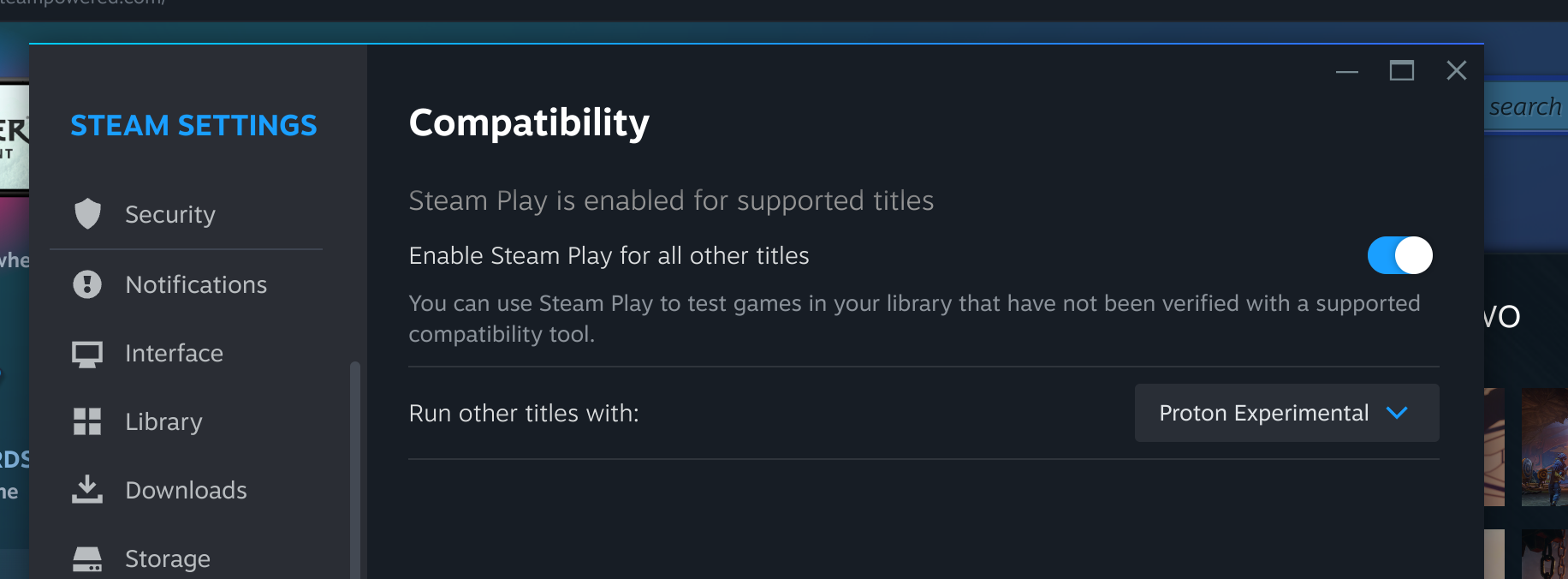
Proton was born as a fork from Wine (WINE Is Not an Emulator), a compatibility layer that allows running applications that target Microsoft Windows on Linux and other POSIX-compliant operating systems, by translating WinAPI calls to POSIX system calls at runtime. What this means is that Wine is not a Windows virtual machine: it is not emulating the hardware or the kernel, it is running Windows applications directly as if they were native Linux applications, by providing a FOSS Win32 implementation that is designed to run on Linux. What it means is that, unlike with a virtual machine, there is close to no performance penalty when a Windows application is executed through Wine.
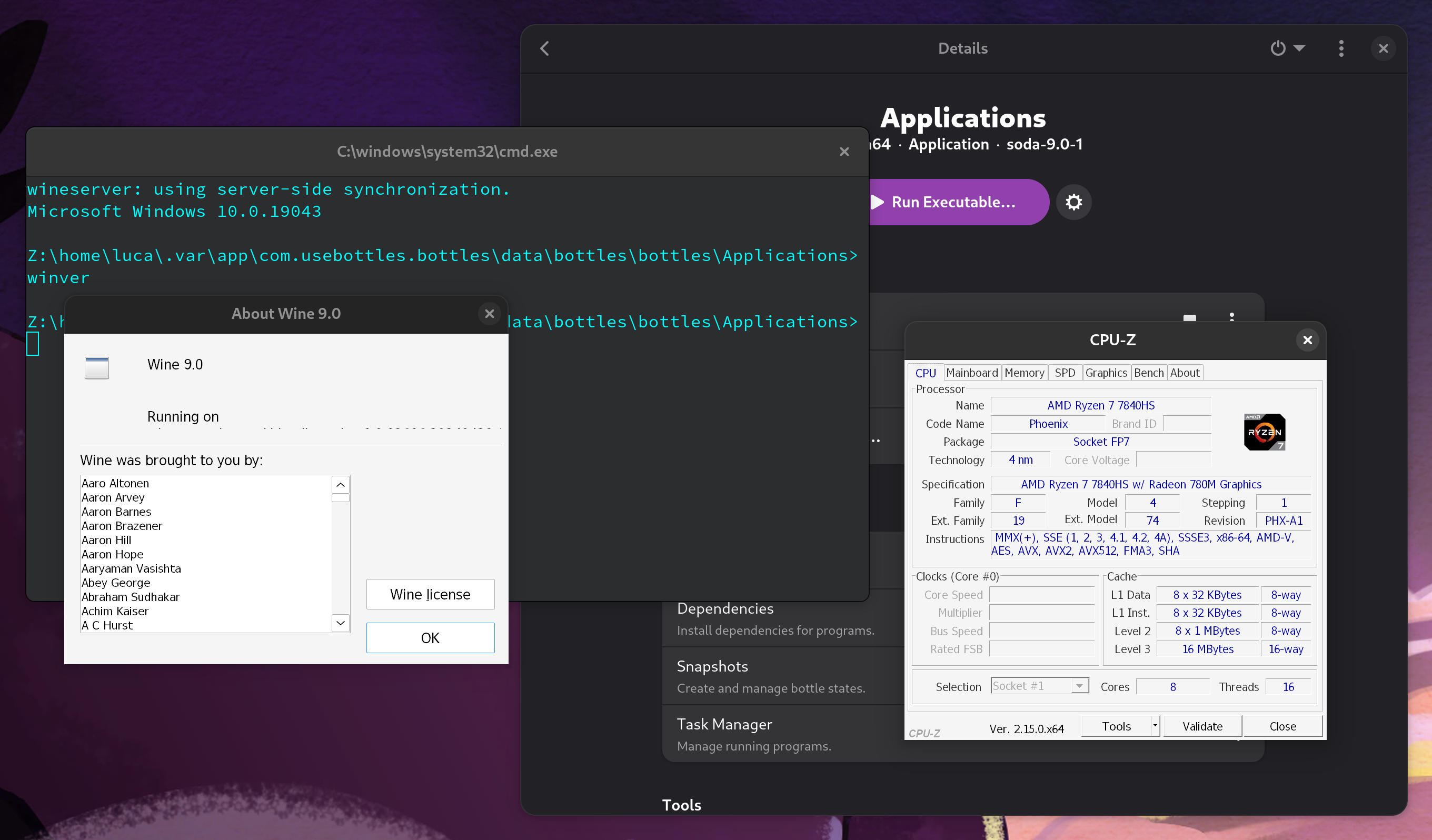
cmd.exe, winver.exe and CPU-Z, noting all details about the CPU, device manufacturer and BIOS are passed over correctly.Of course, Wine is not perfect. It is a "clean room" implementation of the Win32 API, which means that all Wine contributors must never have even so much as taken a glance at Windows's private source code: anyone who has ever worked on Windows at Microsoft, or who has read and studied parts of leaked Windows source code, may not contribute any code to the project, to ensure Microsoft's intellectual property is not violated.
In Proton, the base Wine project was tuned and improved for better video game support (of course, Valve contributes to upstream Wine development a great deal, too), but it was also bundled with other libraries that handle near-native translation of newer DirectX standards. While base Wine can translate old DirectX standards into OpenGL, one of the standardized video APIs that run on Linux, using an extension known as wined3d, it is not able to run even moderately modern versions of the API to satisfaction by itself: either performance is poor, or the graphical context simply does not start. To address this, the community has come up with two very exciting projects, dxvk and vkd3d.
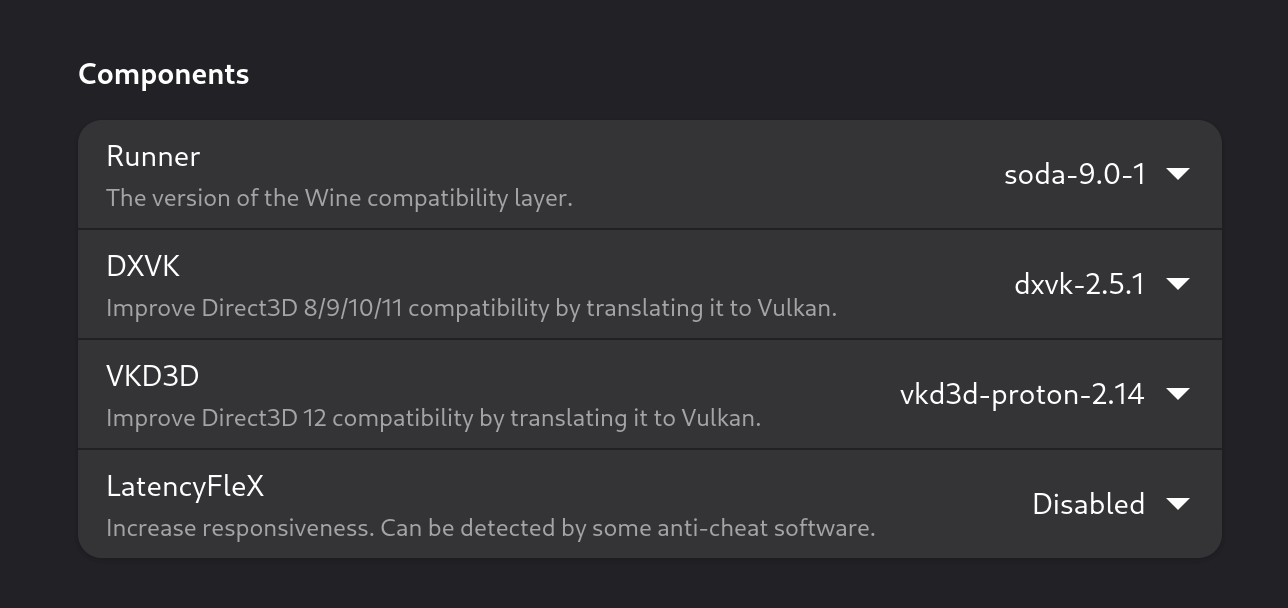
dxvk, which stands for "DirectX to Vulkan", is a library that acts as a translation layer from DirectX calls to Vulkan API calls at runtime. This yields a substantial performance improvement over standard wine3d: as a matter of fact, some games even run smoother on Linux with this translation layer active than directly on Windows! It is distributed as a Windows library (.dll), and it is loaded along with any games on the Wine side. It also works as a Windows library: though they are not the main target, even some Windows users occasionally load dxvk on some of the games they play, because the fact that Vulkan is much more efficient than DirectX 11 at plenty of tasks often offsets the cost of the live translation, providing a free performance boost to many DirectX games.
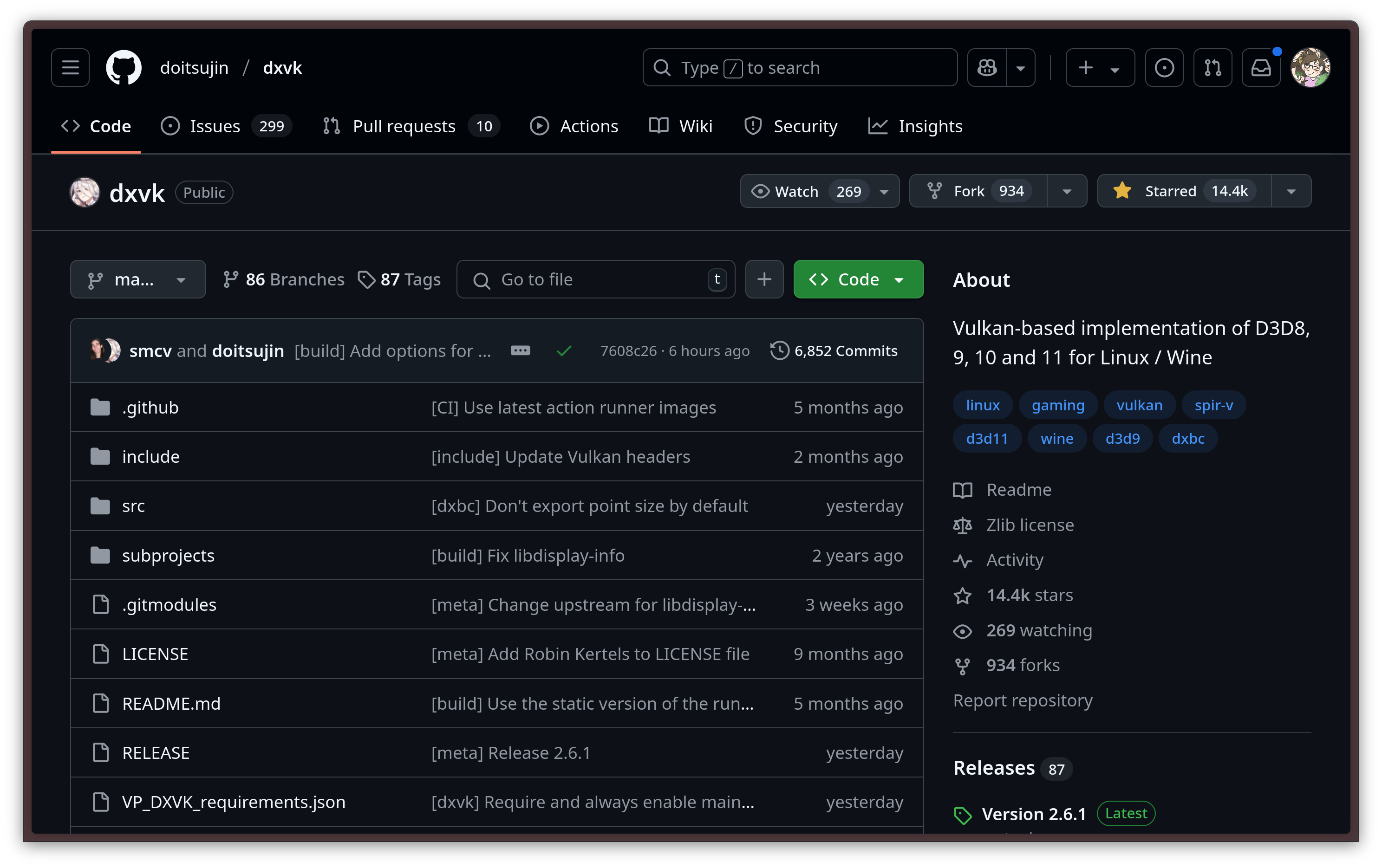
dxvkvkd3d-proton does a similar thing: it gets loaded as a Win3D DLL library as well, and it implements the newest DirectX 12 API on top of Vulkan. Just like DXVK, this library provides a very fast way of running modern DirectX games on Linux.
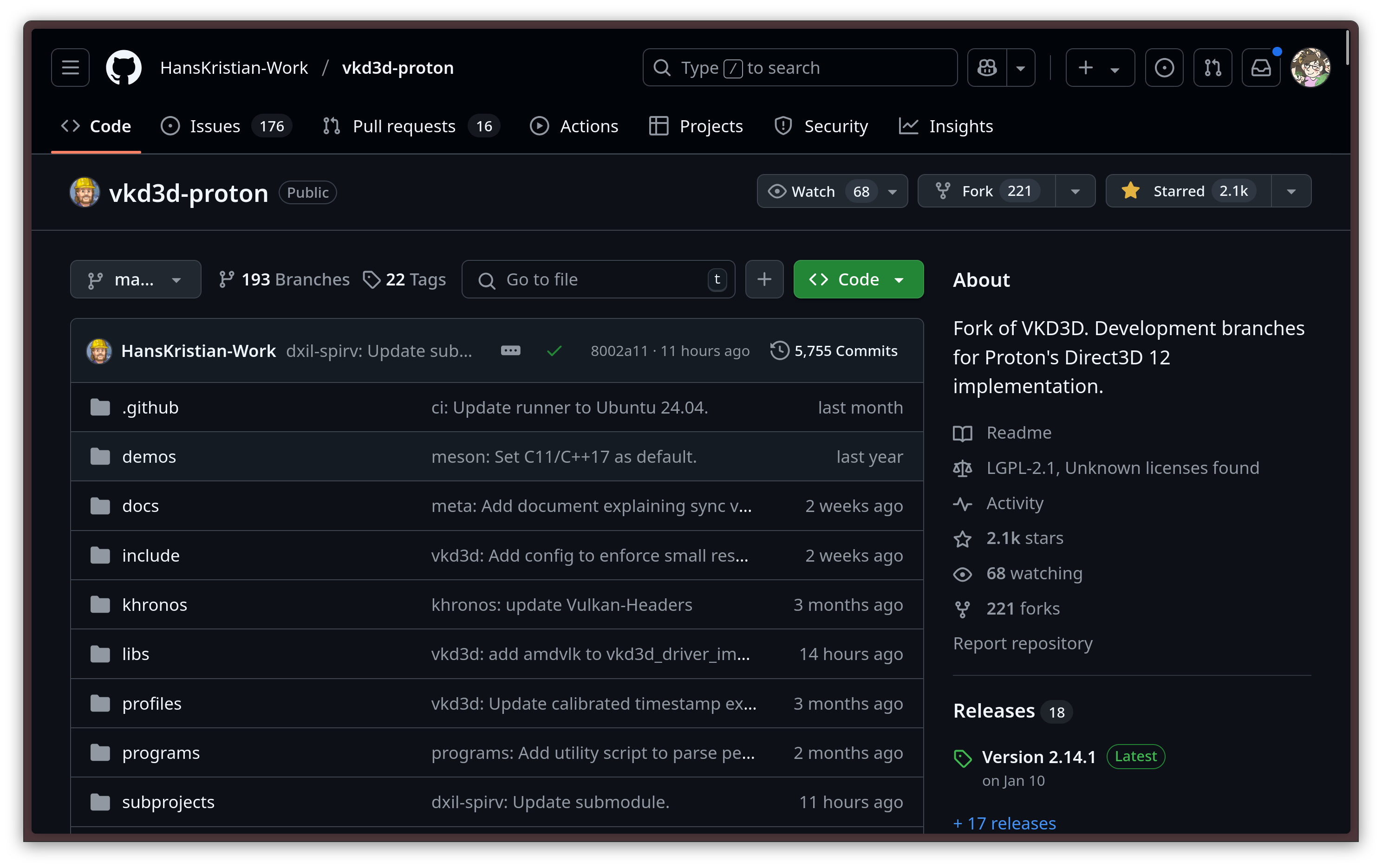
With this stack, and several other pieces like winetricks, a set of scripts that are useful to work around common problems encountered while running Win32 applications on top of Wine, Valve has been able to get more and more games to run flawlessly on Linux. By default, Steam only allows you to run a limited set of Windows games that have been vetted and tested by Valve, but you can — and should — enable a simple compatibility setting to allow you to use Proton on any game. Most of the time, the experience is smooth, even if Valve does not approve of a specific game. You are not alone, either: protondb is a very nice database that includes almost every Windows game on Steam, along with a compatibility report for Proton, and a community section for people to talk about their findings, or workarounds that they found.

Proton works so well that, in some cases, Proton games even outperform native Linux builds: The DirectX 11 to Vulkan translation is often better than the OpenGL backend that is offered to Linux users unless the game also offers Vulkan natively, and, in general, Proton eliminates all the problems that stem from poor Linux ports, such as not being properly compiled against the Steam Linux Runtime, which causes the game to run worse or not at all on some systems. Personally, configuring Steam to run the Windows version through Proton instead of the native Linux port helped me solve some pretty bad graphical artifacts in Firewatch, and it completely fixed an obscure problem I had with Hollow Knight, that caused some keys of my 8bitdo controller not to be properly registered in the game while the controller was connected through Bluetooth. All the other usual troubleshooting steps before that didn't help!
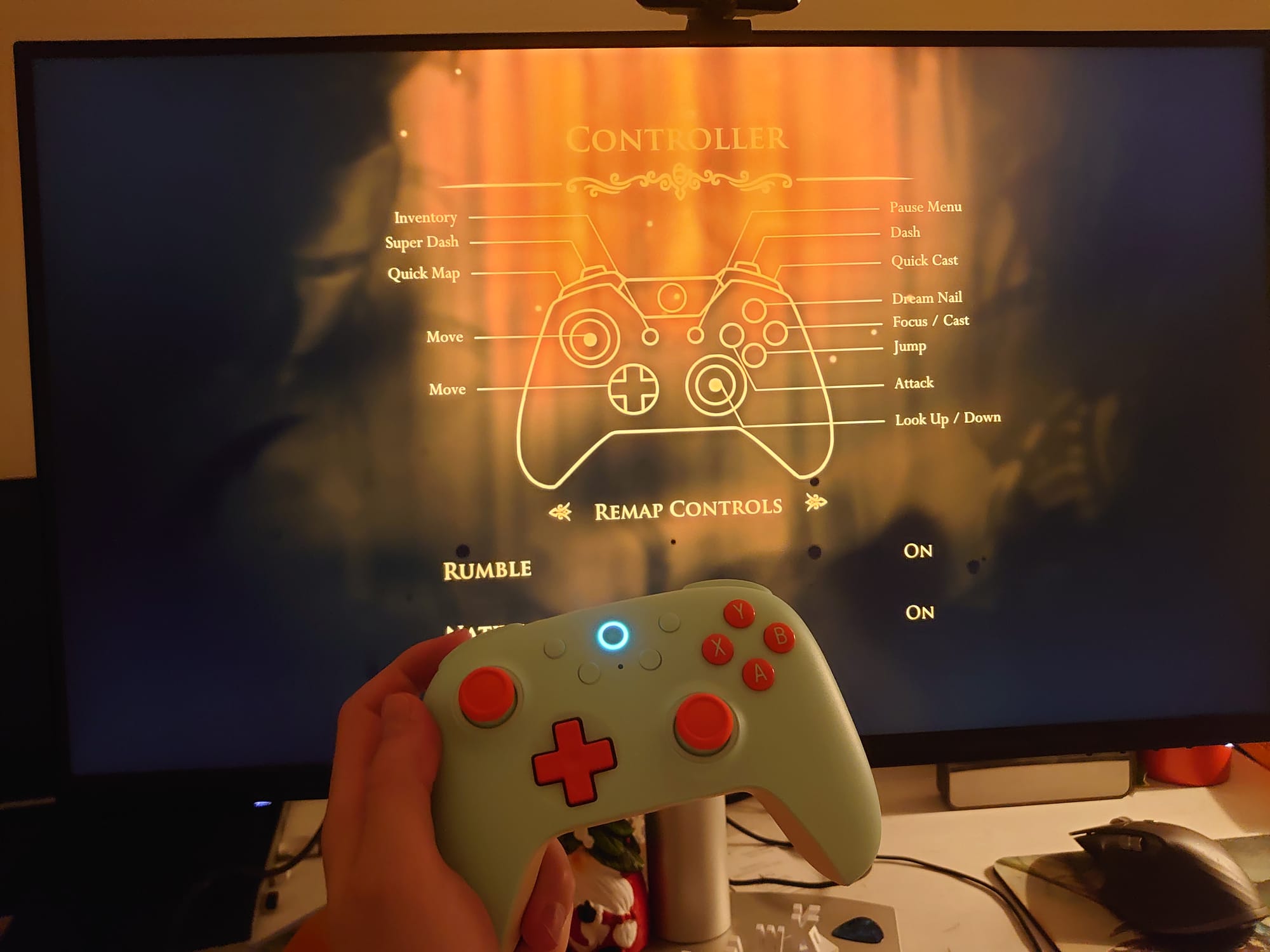
This was pivotal for gaming on the Linux desktop. Thanks to Proton, almost every computer game under the run works on Linux now. Almost. The only exceptions are games that use kernel-level anti-cheat, very invasive software that runs as a Windows driver to detect any game manipulation from the lowest level. However, several security experts warn against running this kind of software at all — even on Windows! — because it is commonly considered to be a huge security flaw, so, perhaps, we should not be too sad about the terrible loss of not getting to run borderline malware on our computers just to be able to play League of Legends.

2021 — The Rise of the Deck
In 2021, Valve finally announced their second attempt at a Linux-based console: the Steam Deck.
Unlike its predecessor, the Steam Deck is a handheld console. It's designed to be used wherever a person wishes, without being tied to the living room. It was finally released to the public in February of 2022.
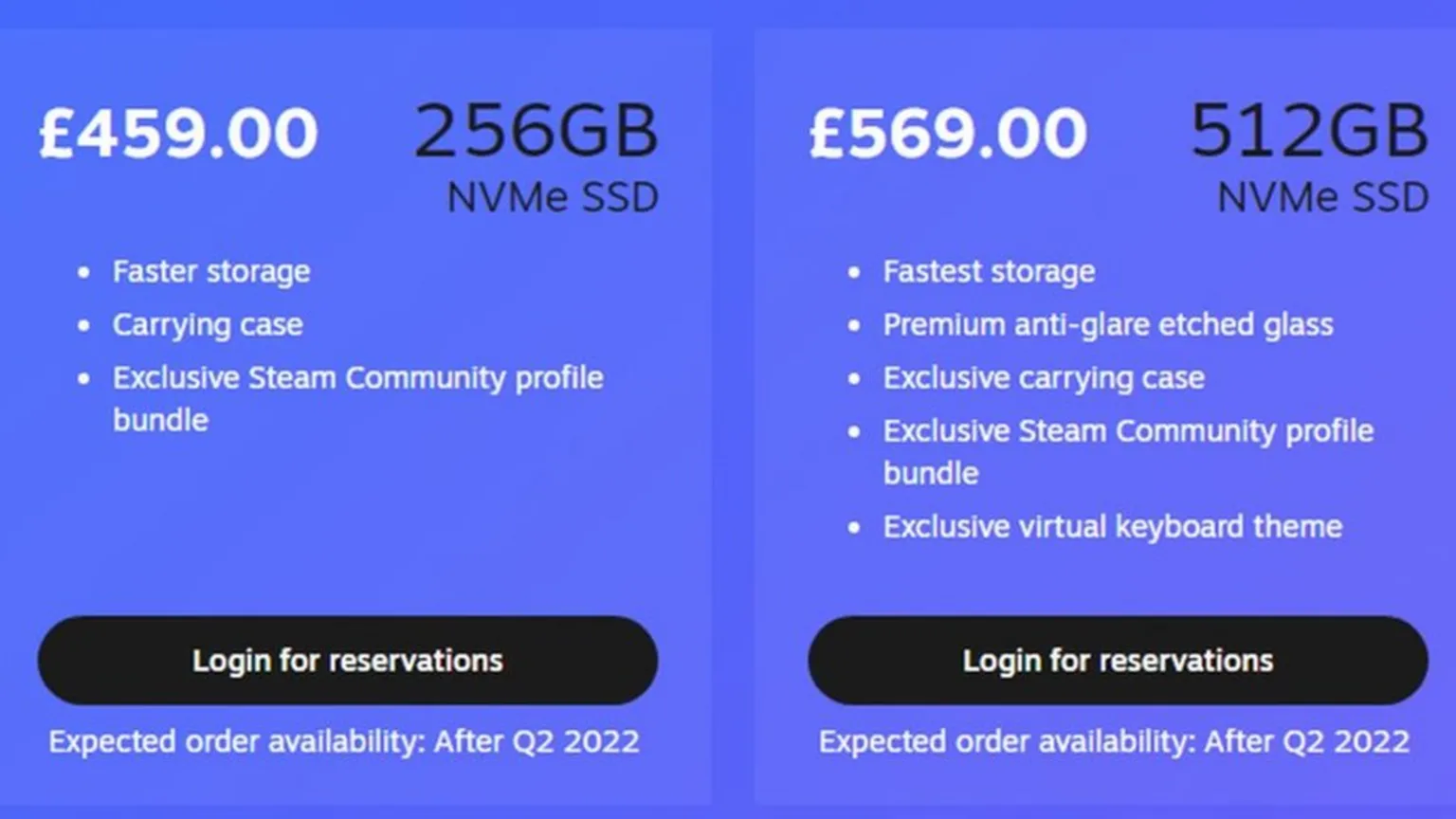
The value on offer for this newer console was more convincing than the original Steam Machine right from the get-go. For starters, it comes with a completely new version of the SteamOS operating system: the newer version is no longer based on Debian but, rather, on a modified version of Arch Linux. The new OS now leverages Proton to support almost every Windows game in the store, rather than just Linux ports, and it works much better than it used to on the old Steam Machines.
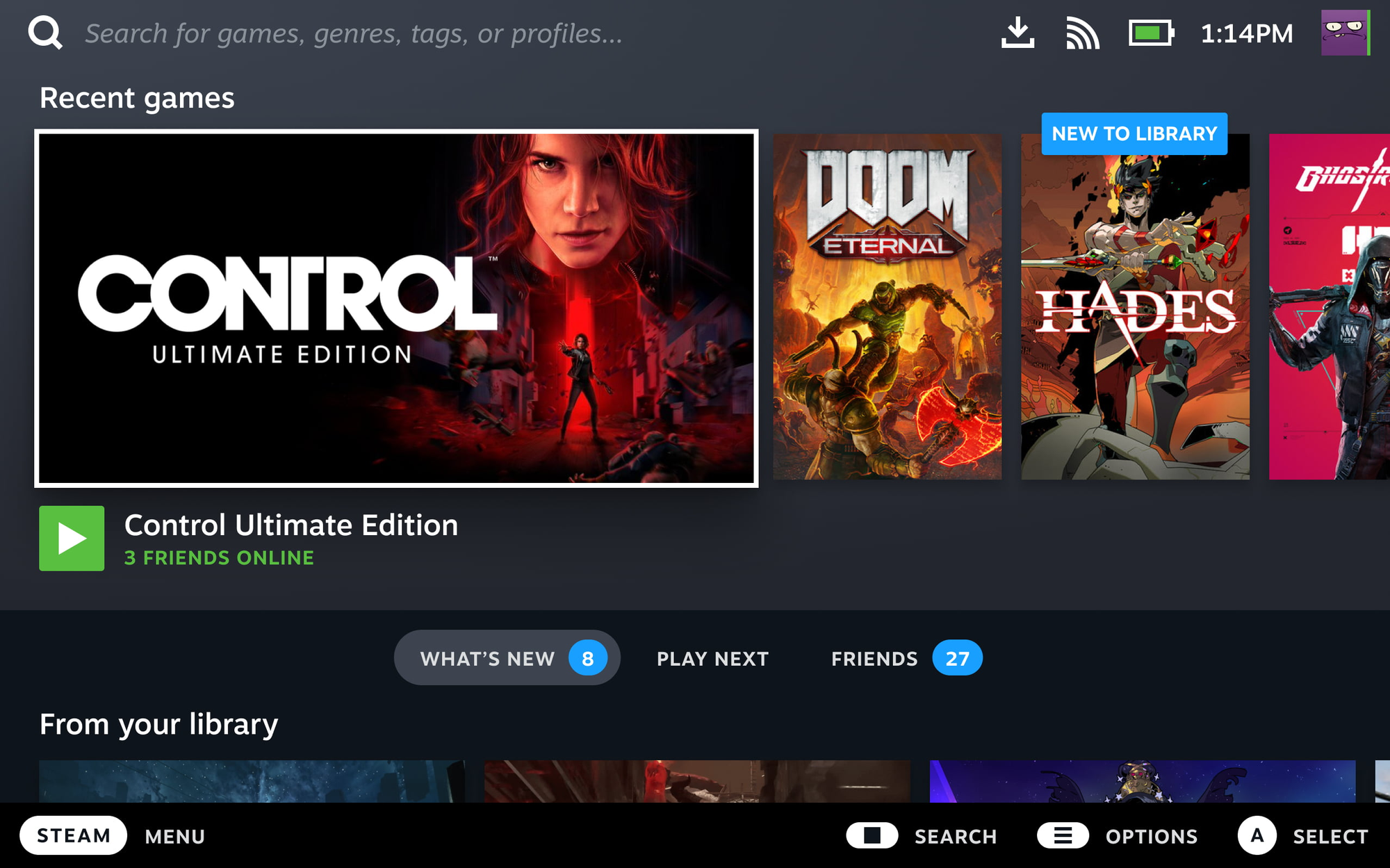
The technology stack used by the modern SteamOS is quite interesting. The system is based on Arch Linux, but it is handled like an image-based distro would be: the root is mounted as read-only, and updates are not delivered by the pacman package manager, but as full image updates where Valve occasionally upgrades various components, preferring stability over staying on the bleeding edge. The system also provides a desktop mode that allows the Steam Deck to be used like a computer, either standalone or docker to external peripherals. The desktop mode uses the KDE Plasma desktop you know and love: you know the deal, it needs no presentations.

When desktop mode is launched, you are effectively using a Linux computer, and you can do whatever you want with it. It is actually incredibly easy to install third-party software on the Deck: you can use the preloaded Discover app to install any application you may desire, so long as it's available as a Flatpak through Flathub, the central repository for Flatpaks. Failing that, you can even run full containers through distrobox, which is handily preloaded by Valve. This allows you to run containers based on any Linux distro under the sun, effectively making even software development tasks possible on the Deck. Should that not be enough, advanced users can even use the steamos-readonly utility to disable the read-only root mount SteamOS uses to use pacman and install native packages on the host. Be warned, though, as this method does have its drawbacks: namely, every SteamOS software update will overwrite anything you installed this way, so it's better to avoid it.
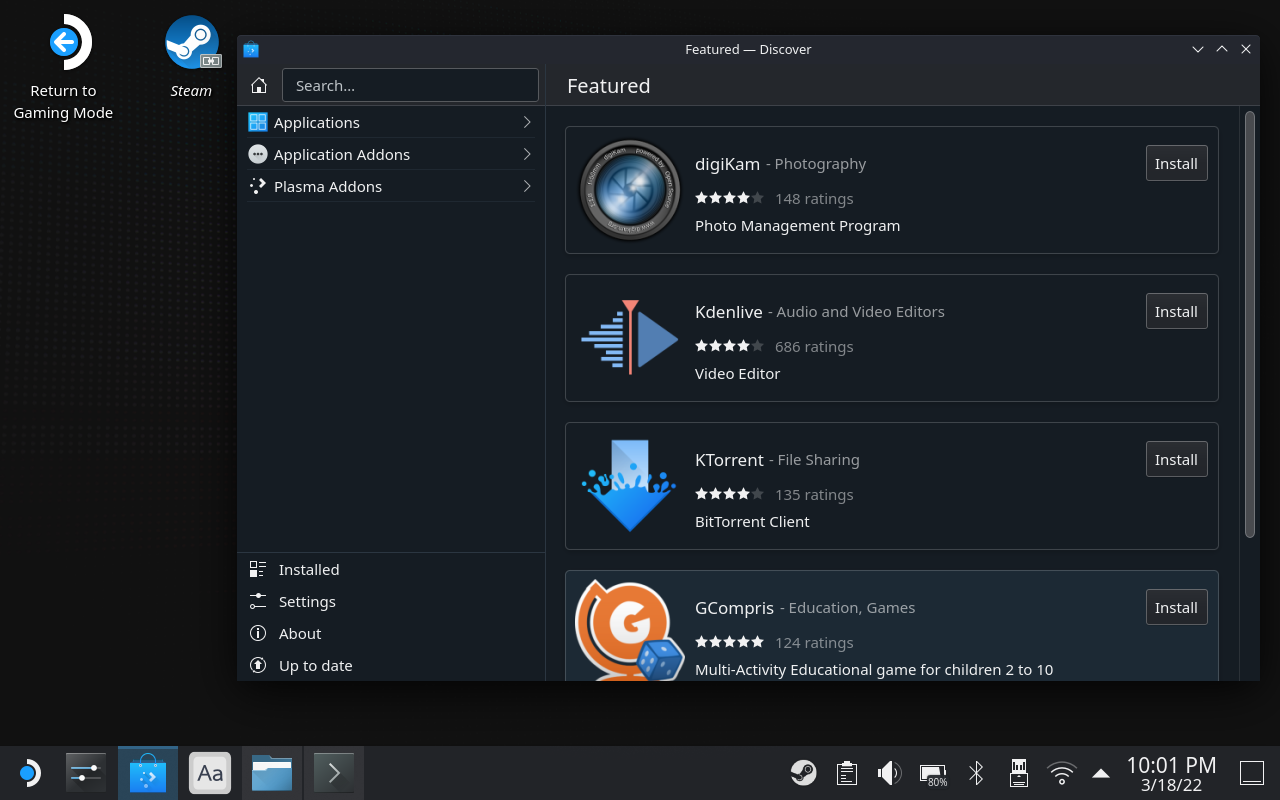
Performance was also much improved compared to the former Steam machines. Through the years, innovation has done its thing, and AMD has been able to come up with some surprisingly strong and power-efficient APUs. Nowadays, you no longer even need a gaming laptop to play: any modern laptop with AMD integrated graphics works well enough for the task. As a matter of fact, I run my laptop without having purchased the dedicated GPU expansion bay for it, and games work fine on the iGPU.
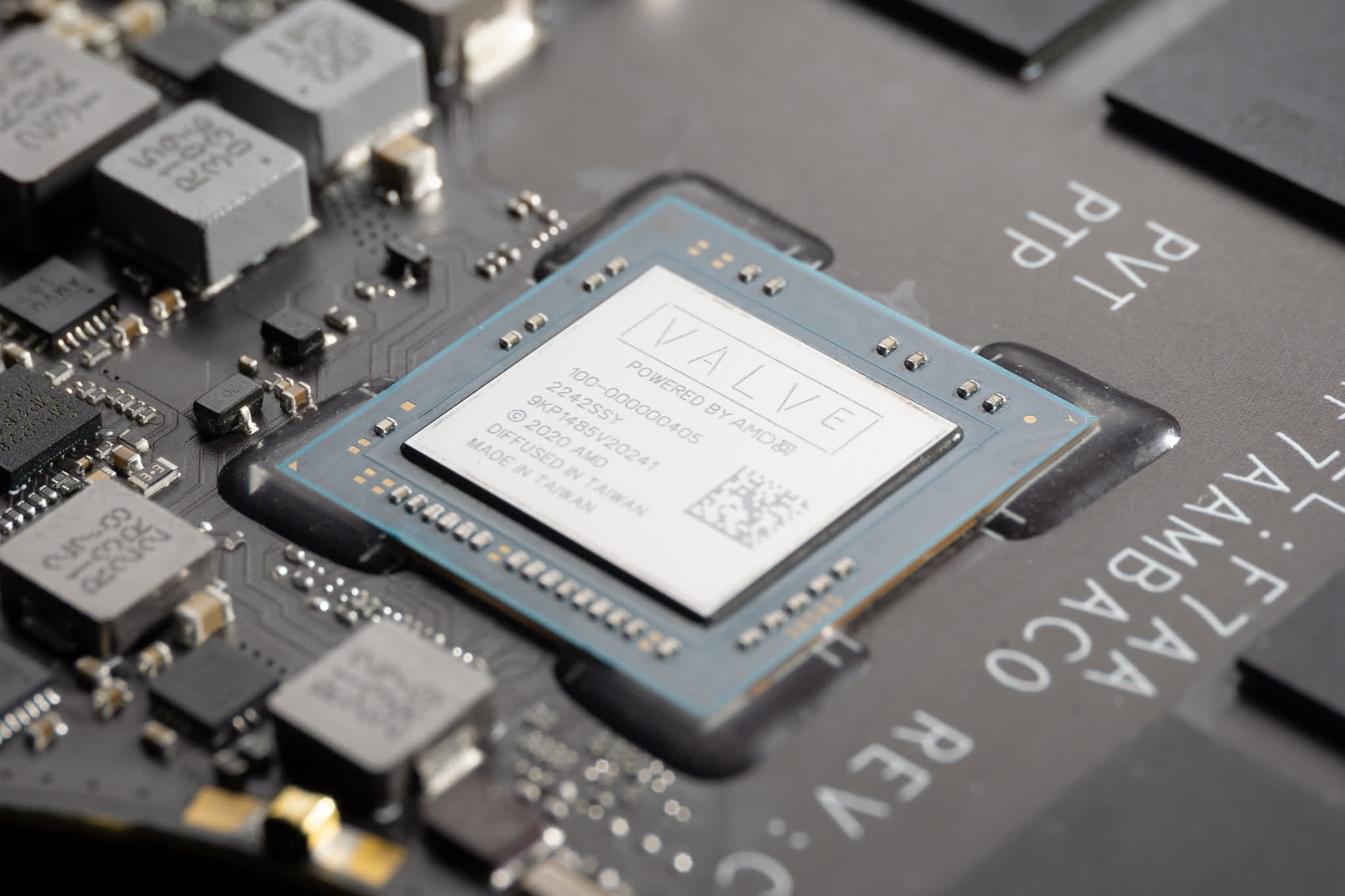
Well, the Steam Deck uses a custom APU produced by AMD just for Valve, which is very similar to their modern laptop APUs, with some differences. This APU uses an interesting blend of 4 hyperthreaded Zen 2 CPU cores paired with 8 RDNA 2 compute units, all with a dynamic TDP between 4 and 15 Watts. It is paired with "just" 16 GB of soldered LPDDR5 memory, initially running at 5500 MT/s on the original model, in a quad-channel configuration. As for storage, an m.2 2230 NVMe interface is used: though it requires some handiwork, it is possible to upgrade the internal storage with an aftermarket NVMe that is larger than the maximum 512 GB storage cut and image it with SteamOS.
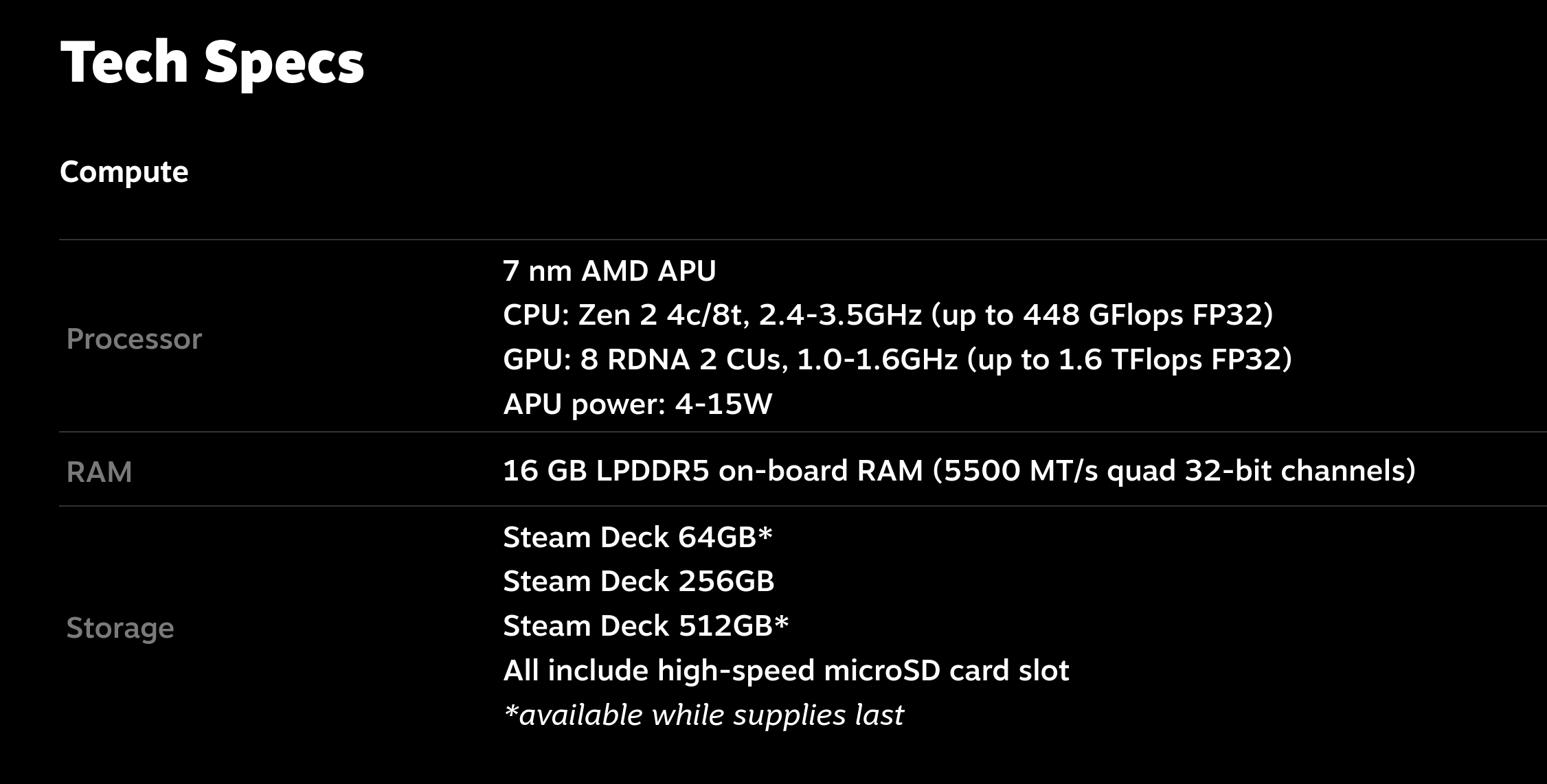
The rest is history. I don't even need to tell you: the Steam Deck sold like hotcakes. People adored it, and it is still selling very well.
It has done wonders for the Linux ecosystem, too: more and more developers have become interested in entering the ecosystem, with all that entails. After so much success, even two very popular anti-cheat solutions, Easy Anti Cheat and BattleEye, suddenly extended support for Linux and Proton to support the Steam Deck. Hooray!
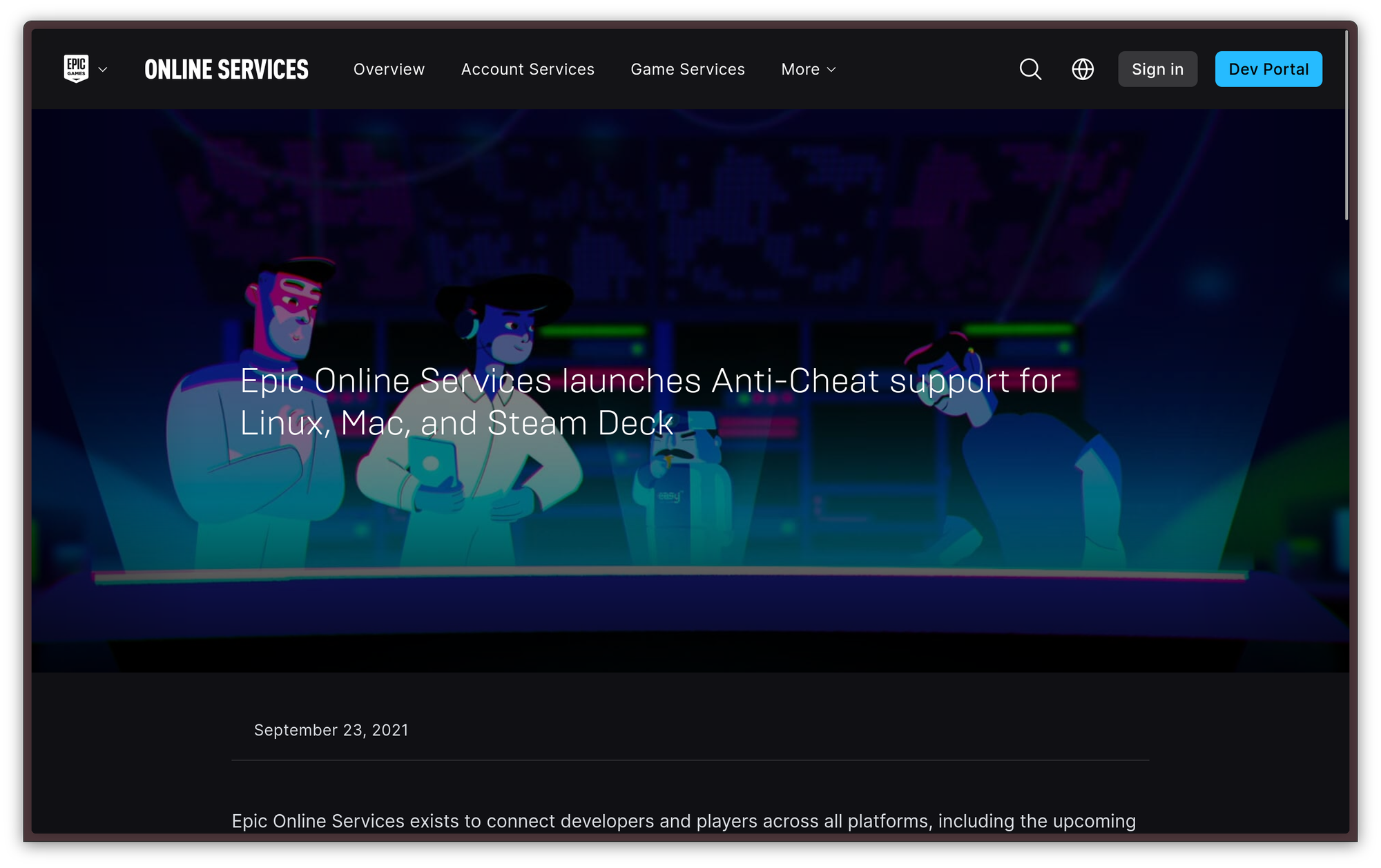
2023 — OLED revision iterates upon greatness
About two years later, in November 2023. the original Steam Deck was still selling very well, and people were still loving it. However, Valve came out with a new, improved version of the console, the Steam Deck OLED.

The Steam Deck OLED does not replace the original Steam Deck, and it does not provide a significant speedup over it: only the RAM throughput has increased, going from 5500 MT/s to 6400 MT/s. However, the design was updated, and the screen was replaced with a larger OLED version with punchier colors and a 90 Hz refresh rate, with battery life improvements coming from the slightly larger battery, and the same APU being switched from a 7 nm to a 6 nm production node. The Wi-Fi card was also bumped from Wi-Fi 5 to Wi-Fi 6e, delivering much better transfer rates compared to the original Deck, for which the soldered-down, on-board WLAN was a weak point.
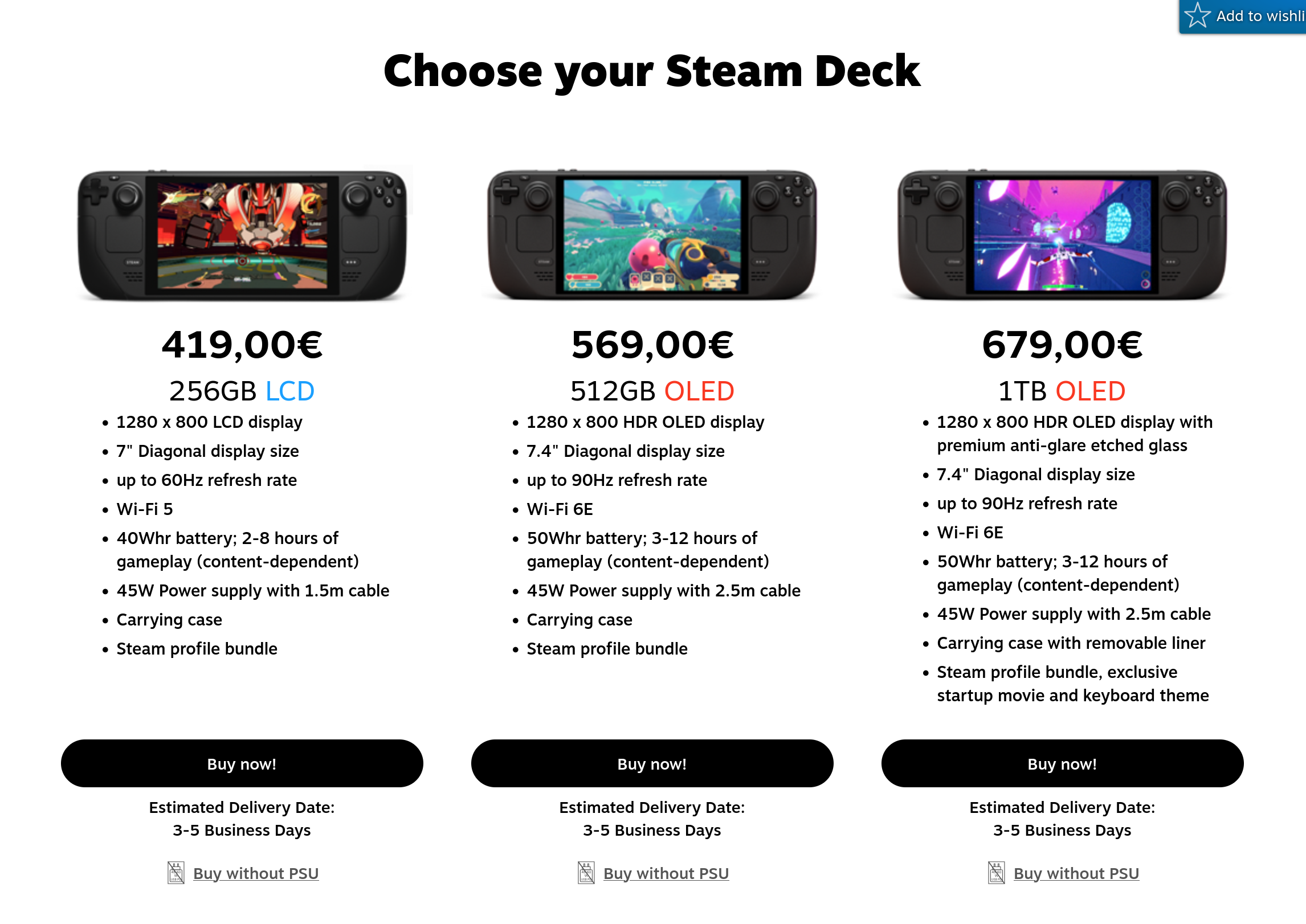
Just like the original version, the OLED version was a success: however, it did not phase out the original model. People are still buying the original version for several reasons: it's much cheaper, and some people genuinely prefer LCD screens for reasons related to eye fatigue caused by the PWM backlighting on most OLED panels.
2025 — SteamOS meets third-party hardware, again.
Although the Deck has been a roaring success, Valve is still a strong believer in open ecosystems. This is demonstrated by the fact that there is a roadmap for the expansion of SteamOS: first, the company intends to support other handheld devices and, at last, the plan is to eventually expand SteamOS support to general hardware and PCs, allowing regular Linux users to install it on their boxes, as they would with a regular distro. The only reason why that hasn't happened yet is more technical than political: Valve claims that, while you can technically install the Steam Deck's recovery image on any hardware, it is still pretty vertically optimized for the Steam Deck and its AMD APU in particular, so, it is not guaranteed to work on other hardware.
The first step of SteamOS's expansion seems to be happening right now. Valve encouraged third-party device manufacturers to adopt SteamOS support on their devices, and it seems like it is beginning to catch up. Lenovo is now collaborating with Valve on a new SteamOS-based handheld, the Lenovo Legion Go S.
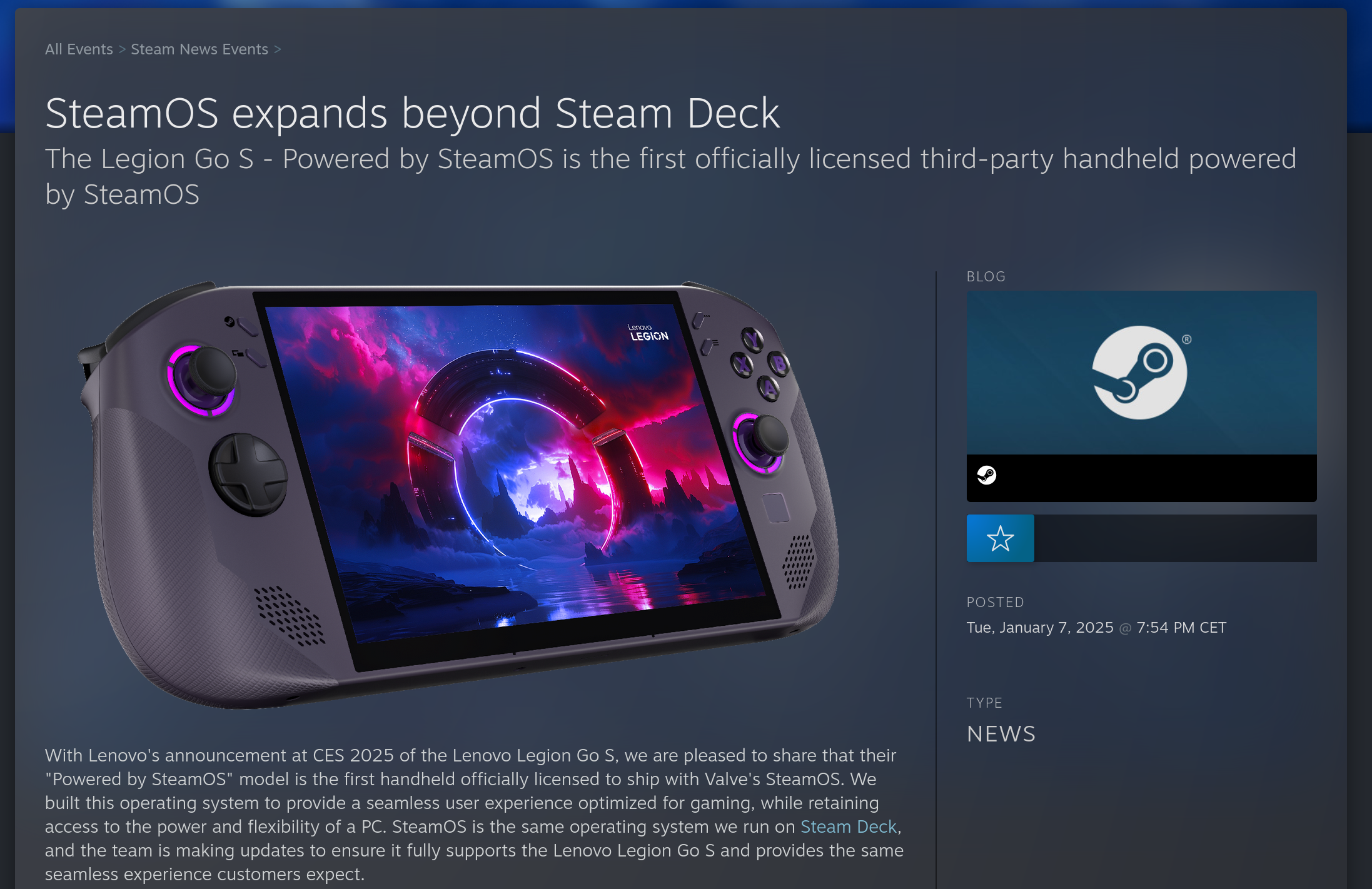
The console looks good. It should be more powerful than the Steam Deck, since it ships more recent AMD silicon, but real-world performance remains to be seen. This is part of why this is exciting, though: Valve has no interest in locking you into their hardware, and they seem thrilled for Steam users to have choice. Their reference implementation is likely still going to sell very well, but the real value for Valve is getting more users into their ecosystem thanks to SteamOS. This might just be the first thing that really challenges Windows in the gaming market: if people love SteamOS, and a full ecosystem is emerging around it, why should anyone want to deal with the bulk of Windows 11?
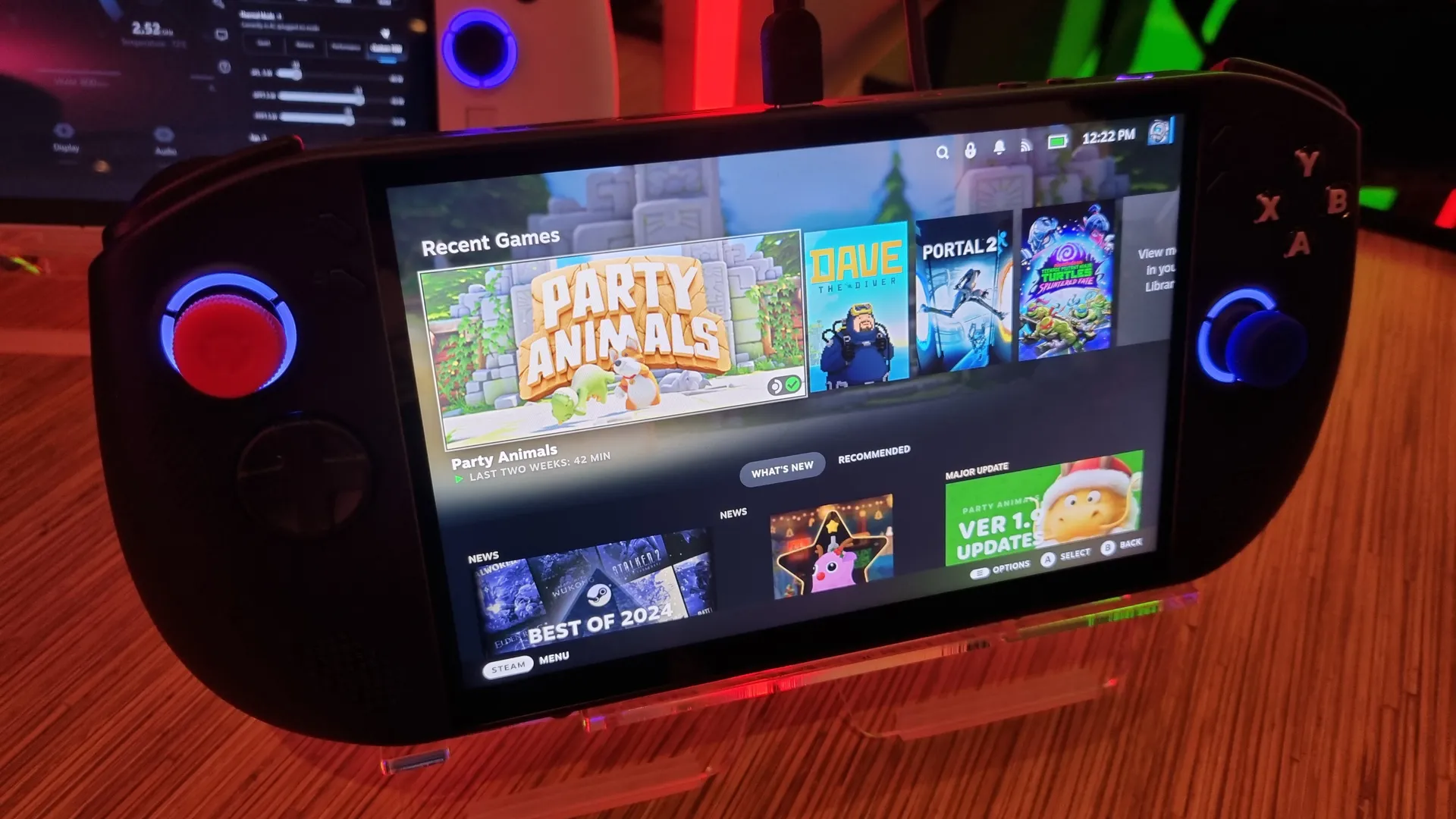
We can, surprisingly, not count HP among those Windows 11 fans. Ever since Valve has opened up its SteamOS ecosystem to third-party handhelds, HP has praised the experience it brings, expressing interest in creating a SteamOS handheld themselves, calling the experience of Windows on a handheld gaming device "a struggle". Yes, it's starting.
The Future — What's Next for Valve and Linux?
Officially, we do not yet know what the future holds for Valve and Linux. We do know there won't be a "Steam Deck 2" for a while, and we know Valve intends to release a generic SteamOS installer for most devices eventually. However, a leak shows that SteamOS seems to be expanding its architectural support to ARM and RISC-V CPUs. What does this mean? We just don't know yet, but it's exciting to see.
After all, Valve is the company that has never stopped experimenting. It's one of the companies that I am genuinely happy exists. I can't wait to see what the future holds for them.


